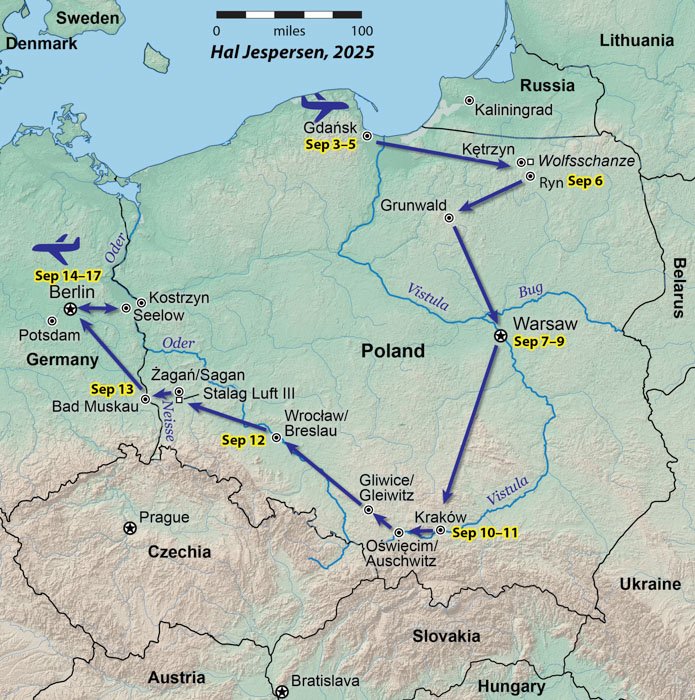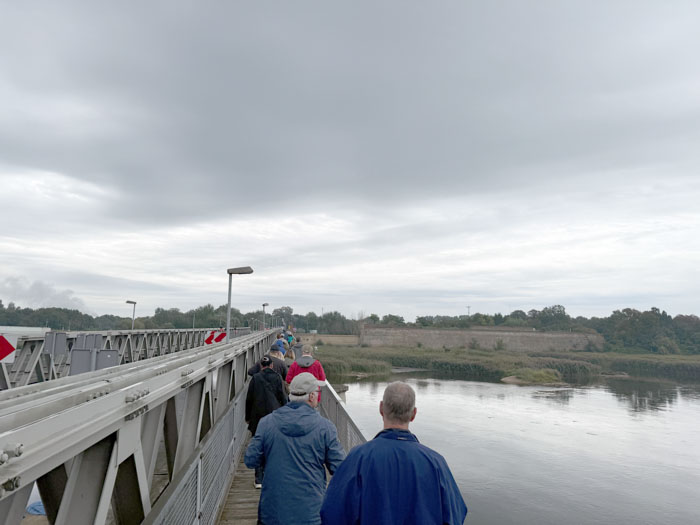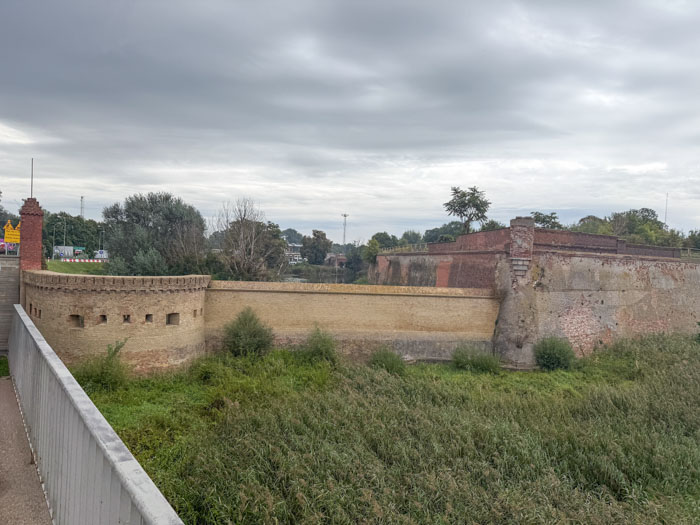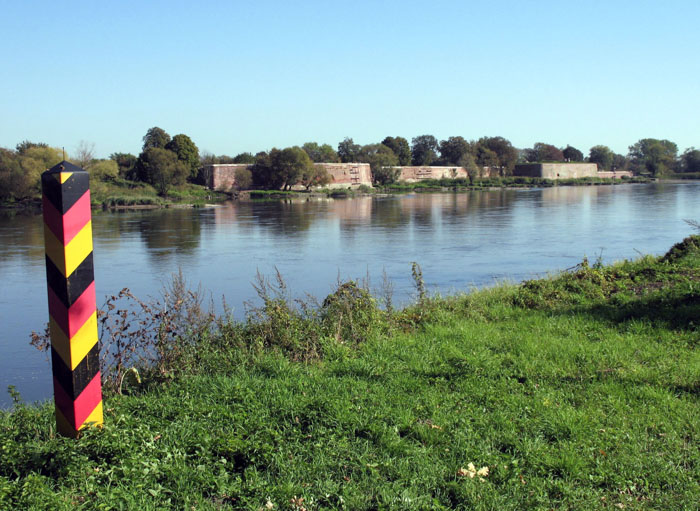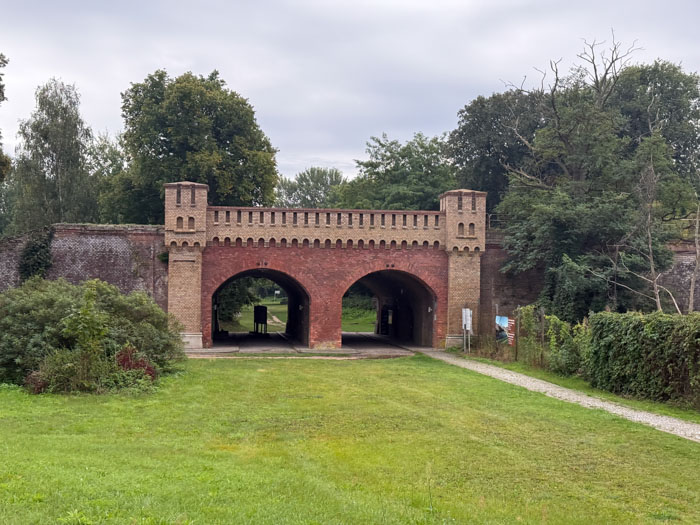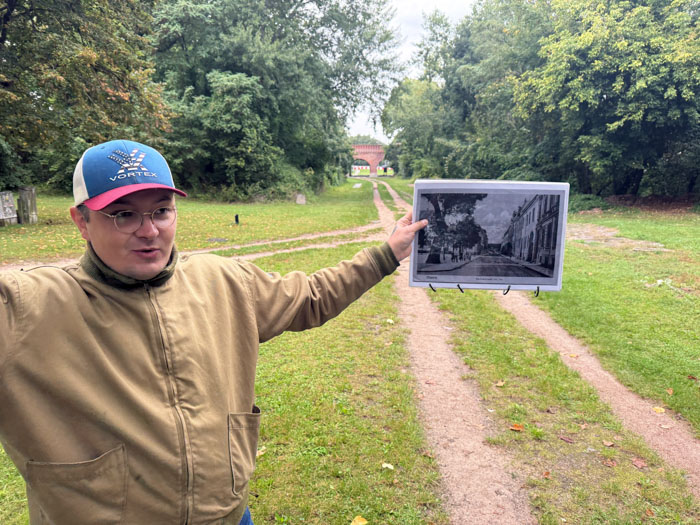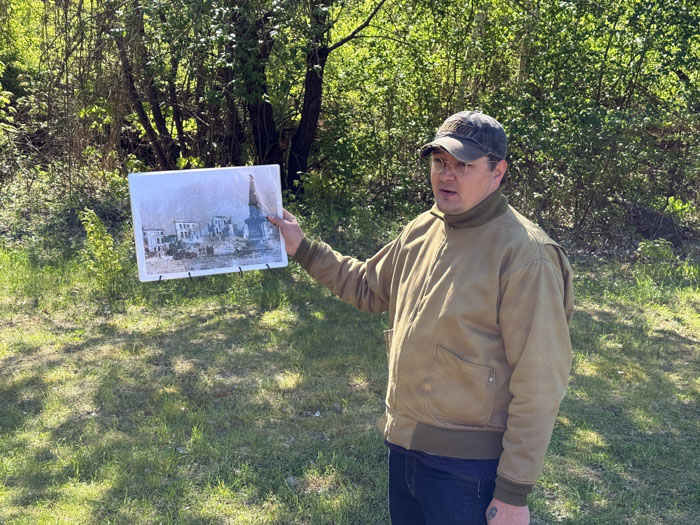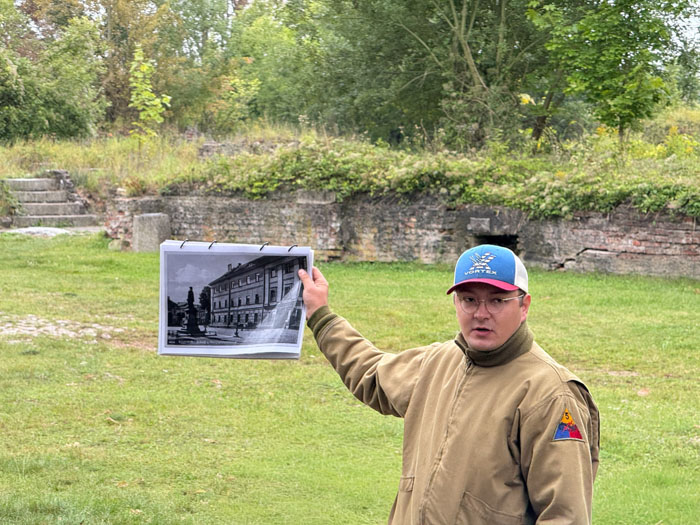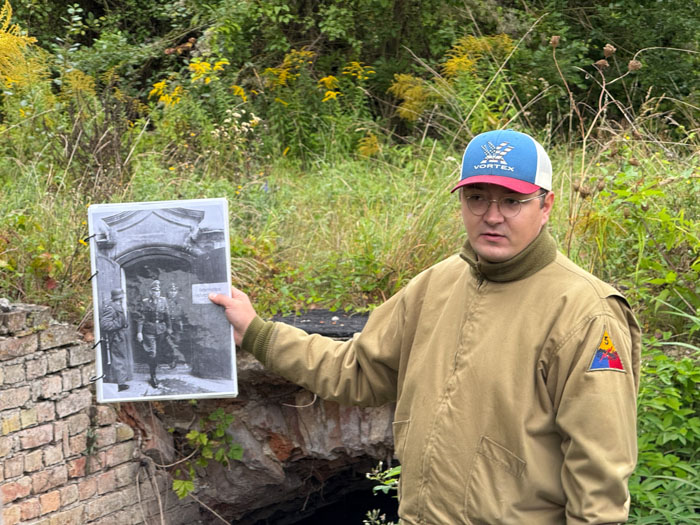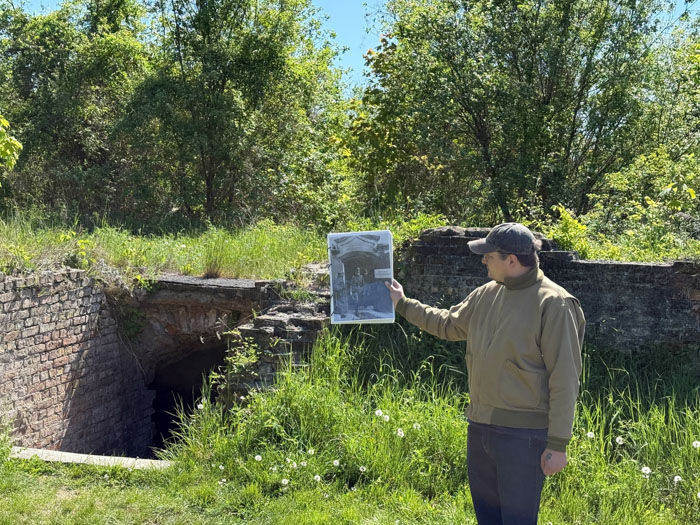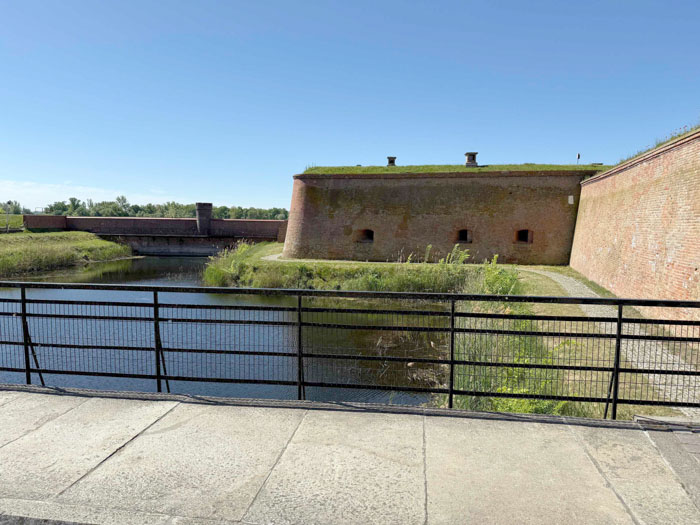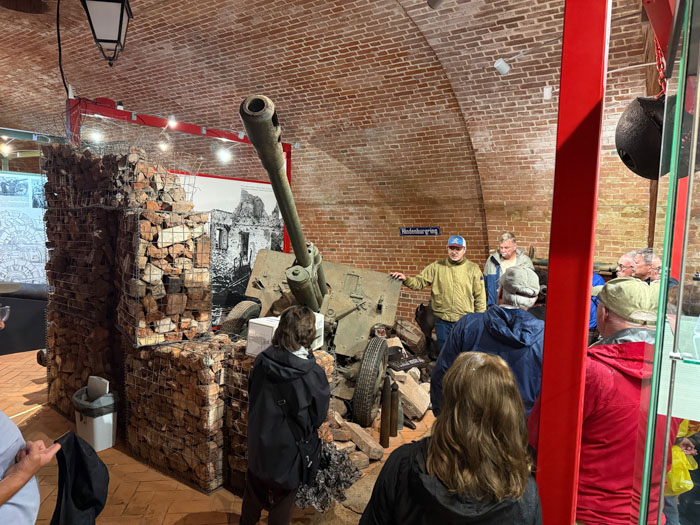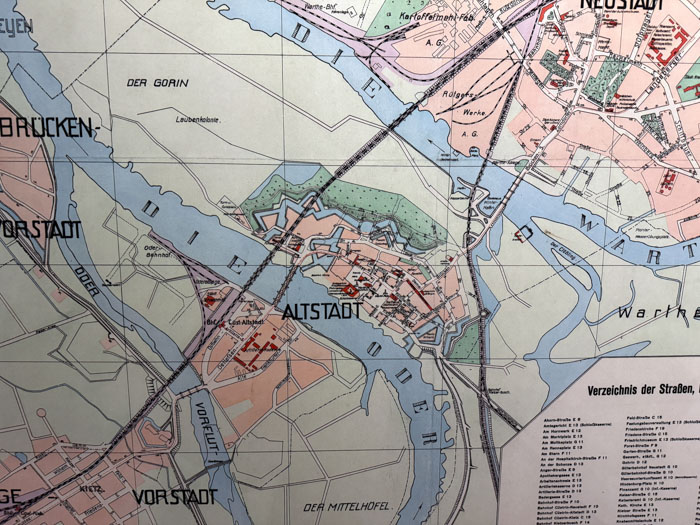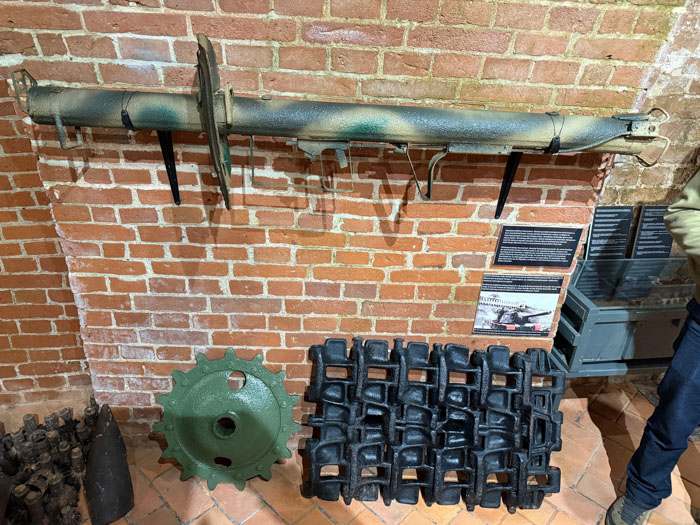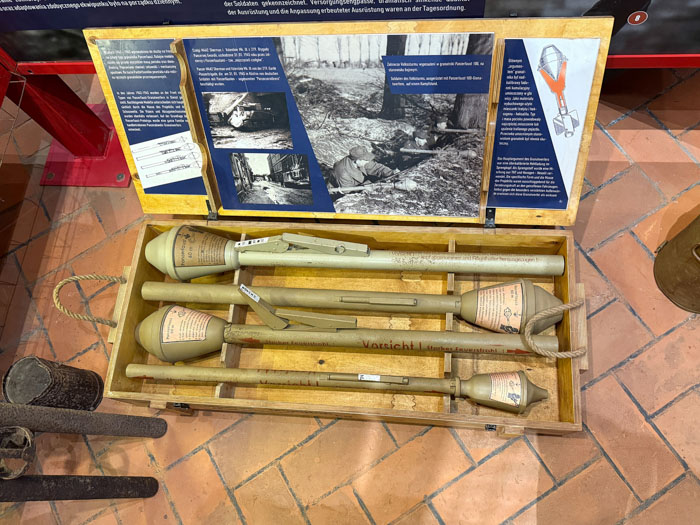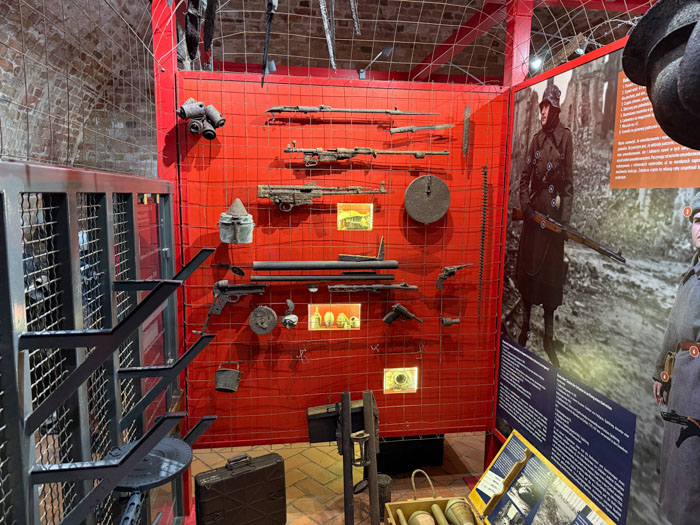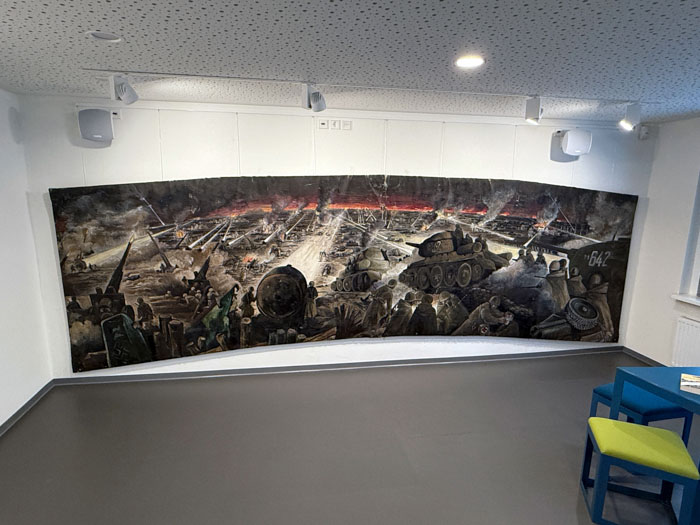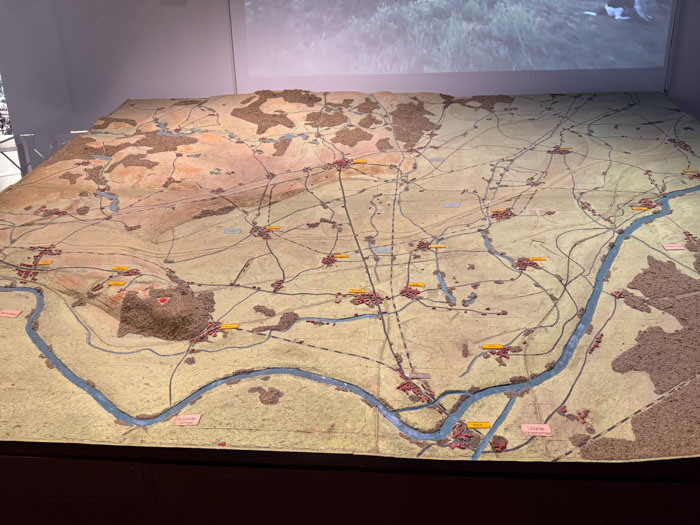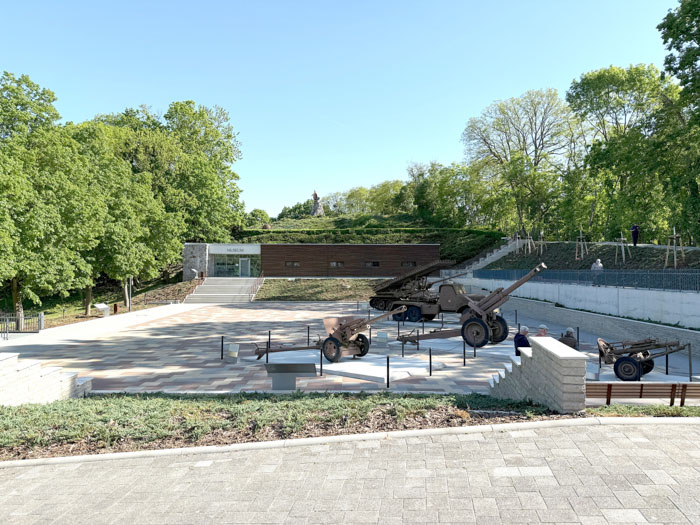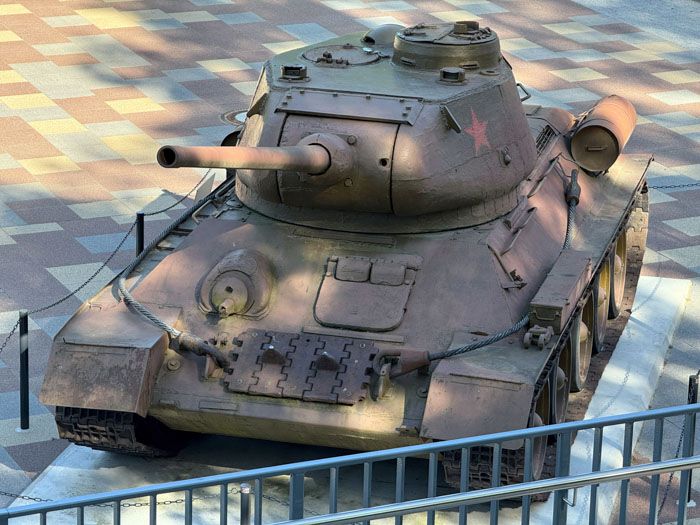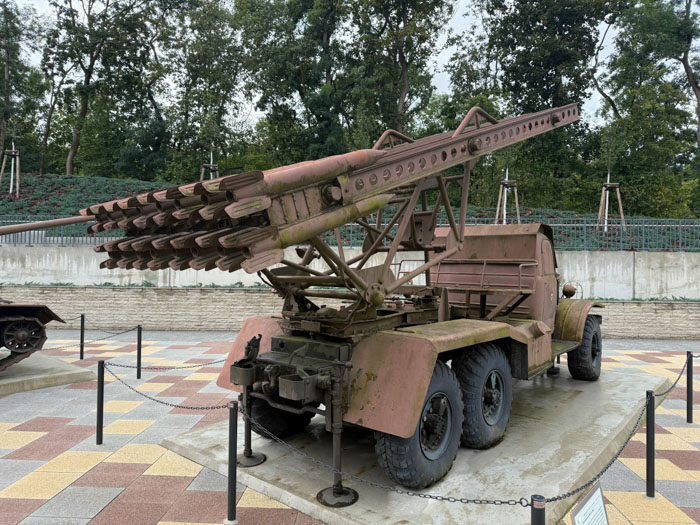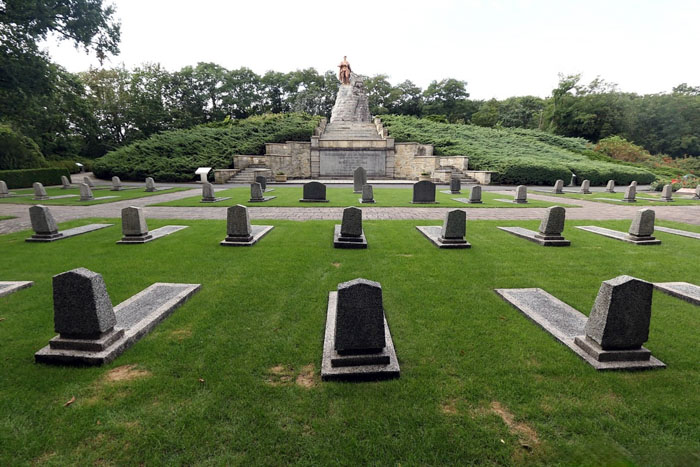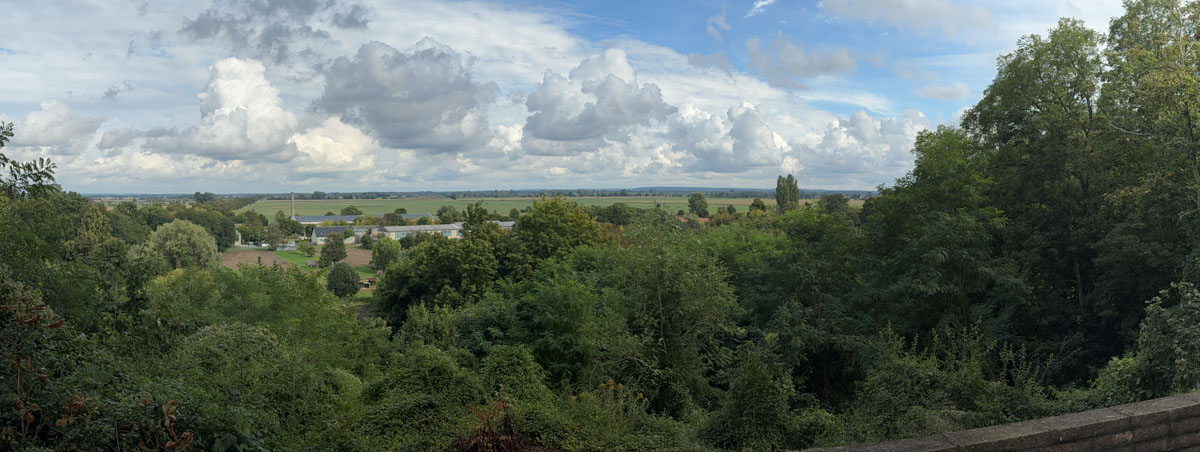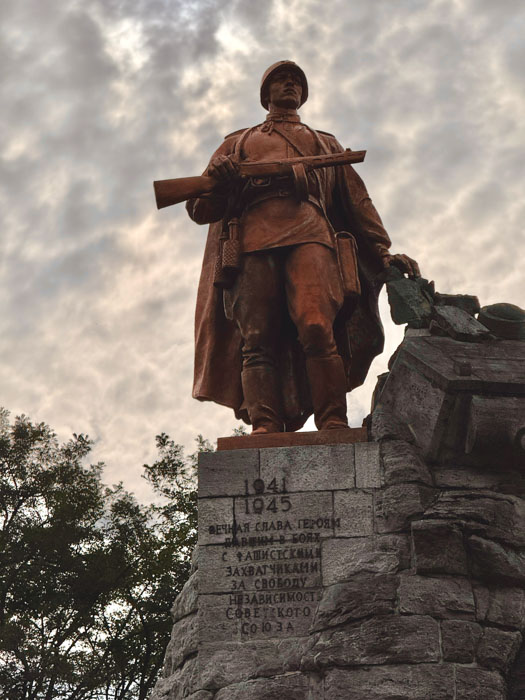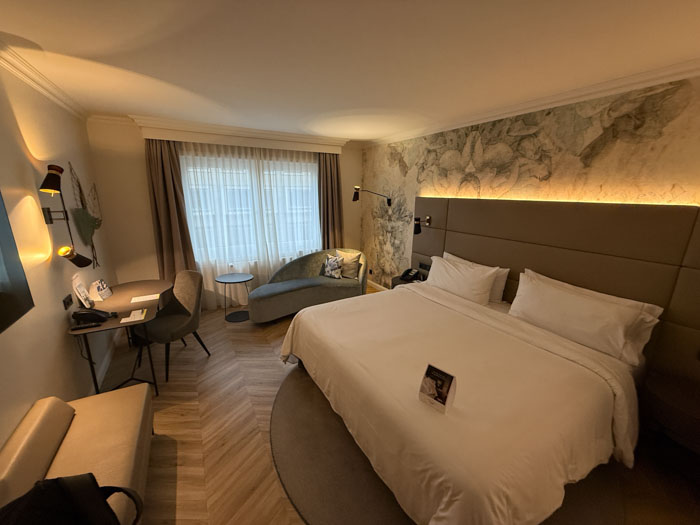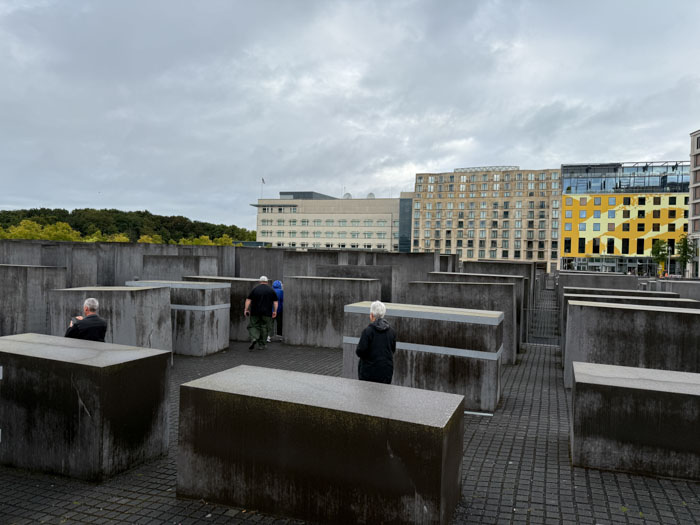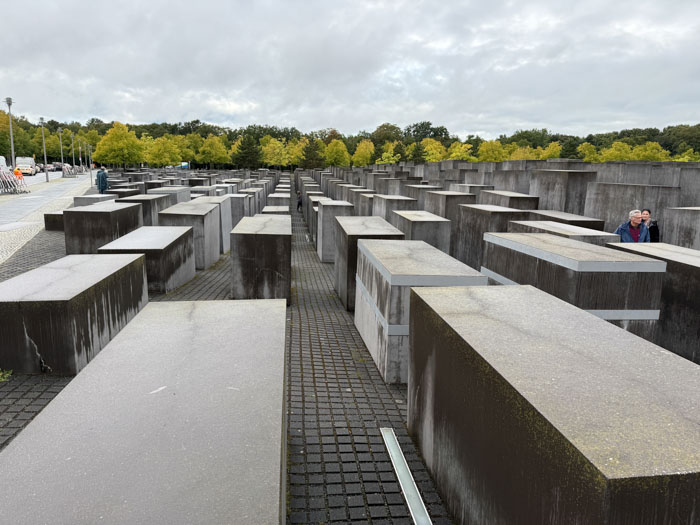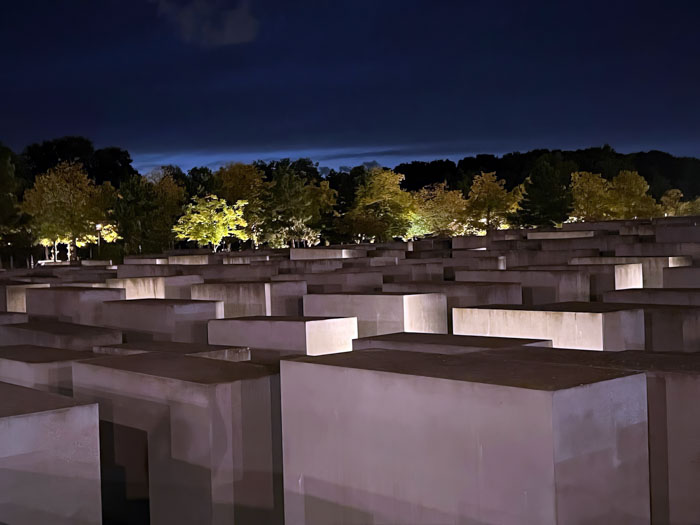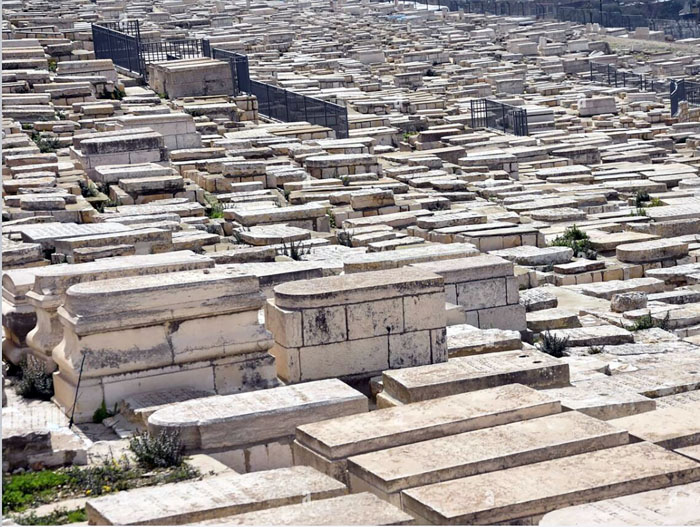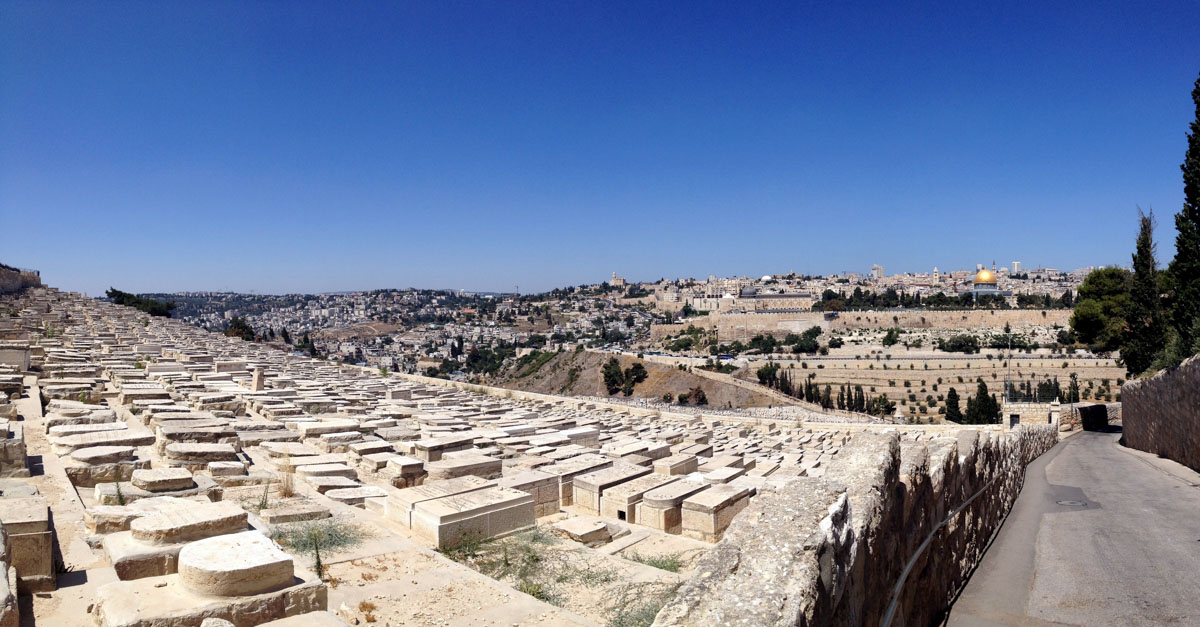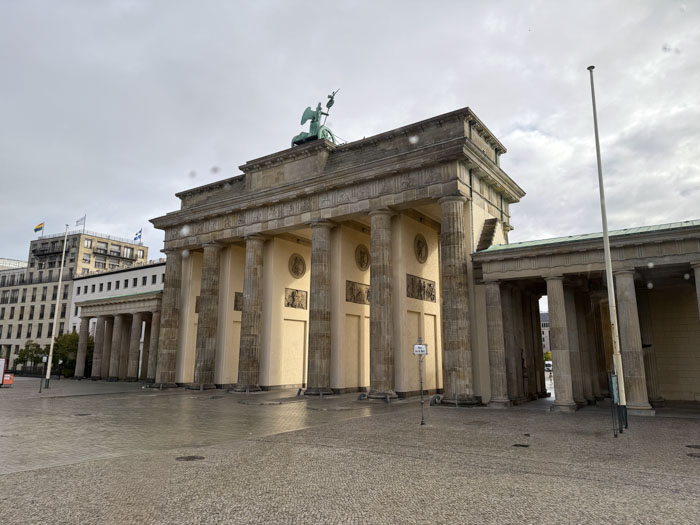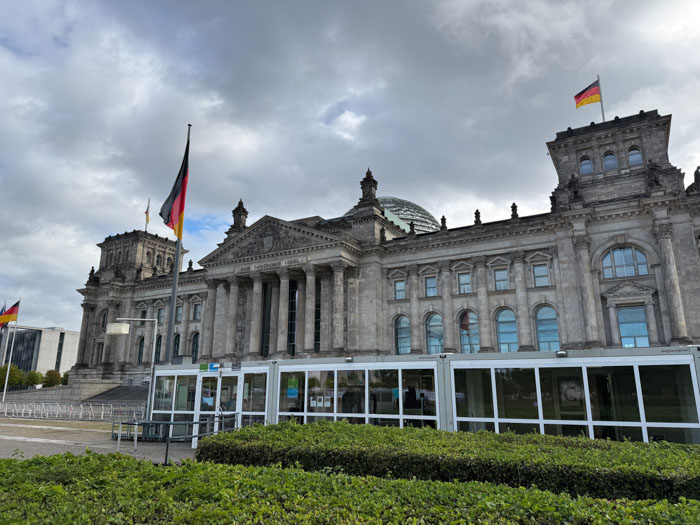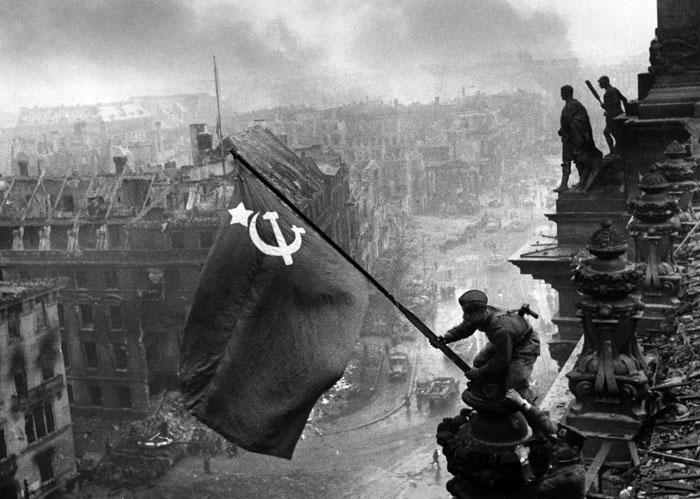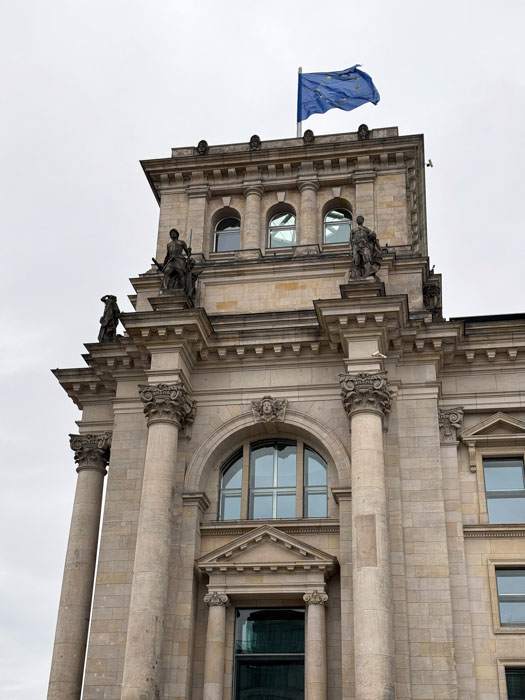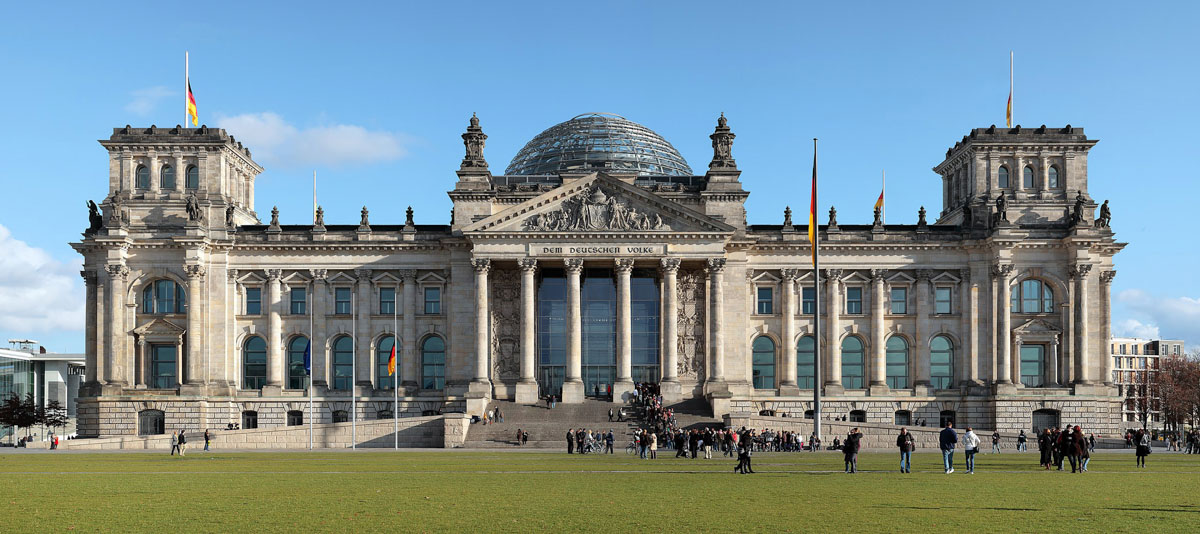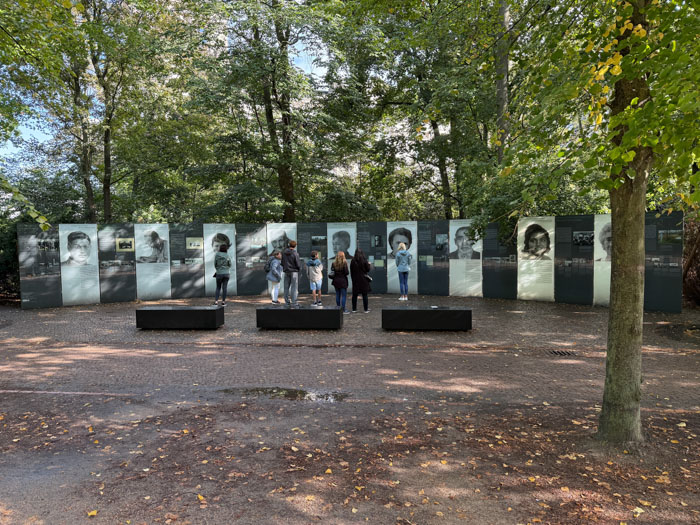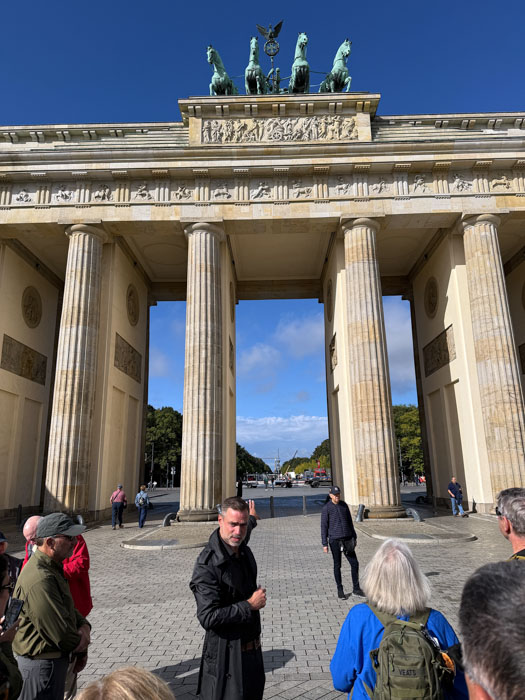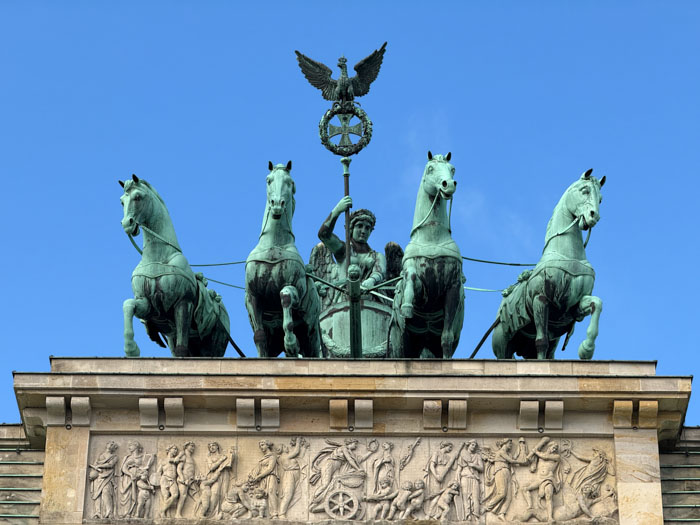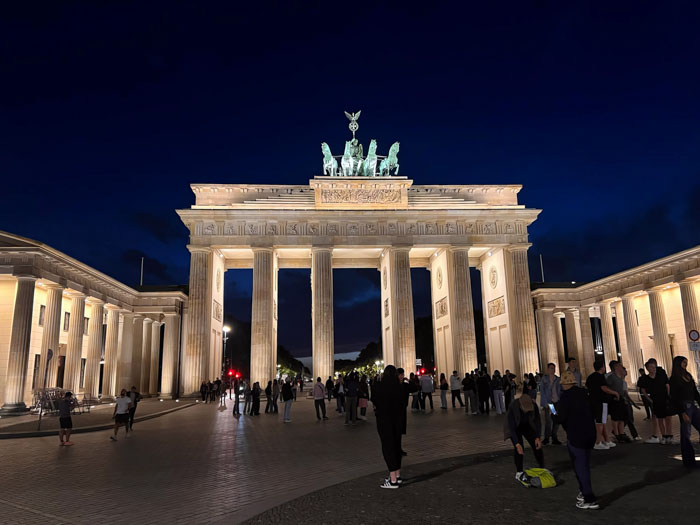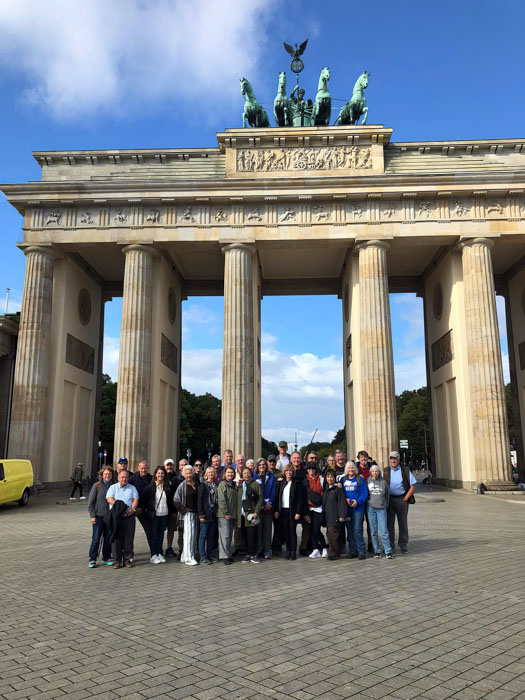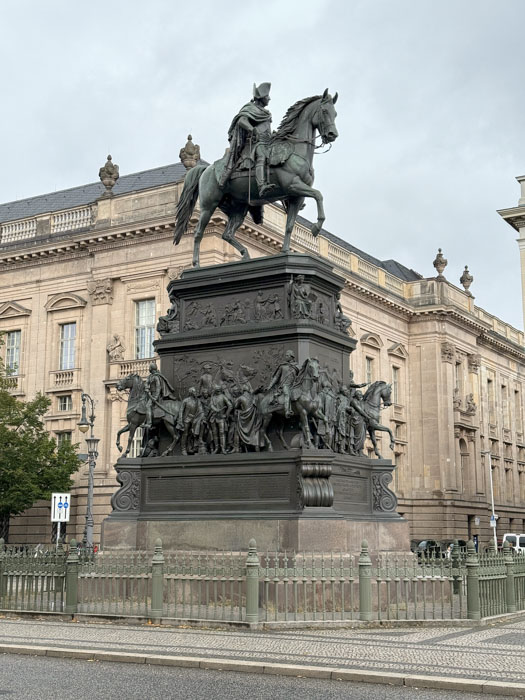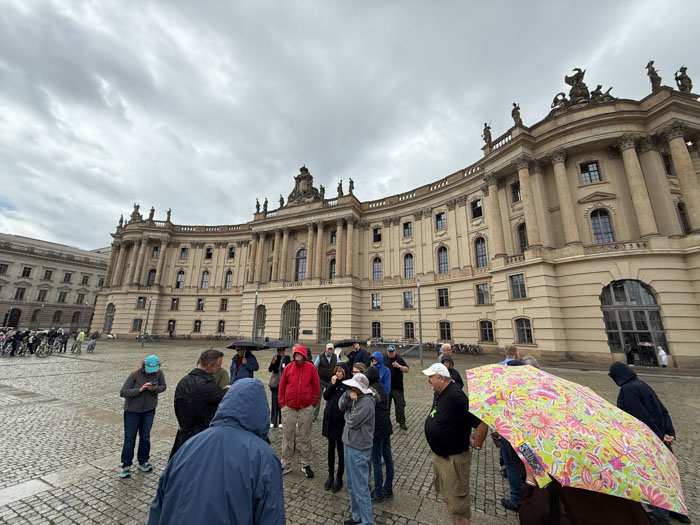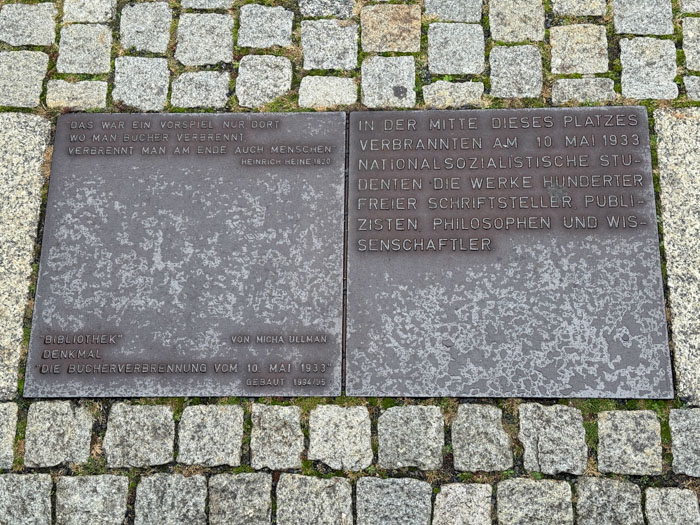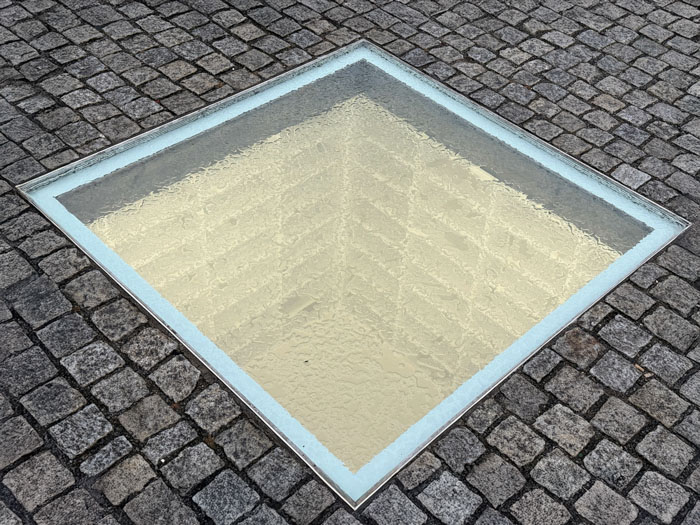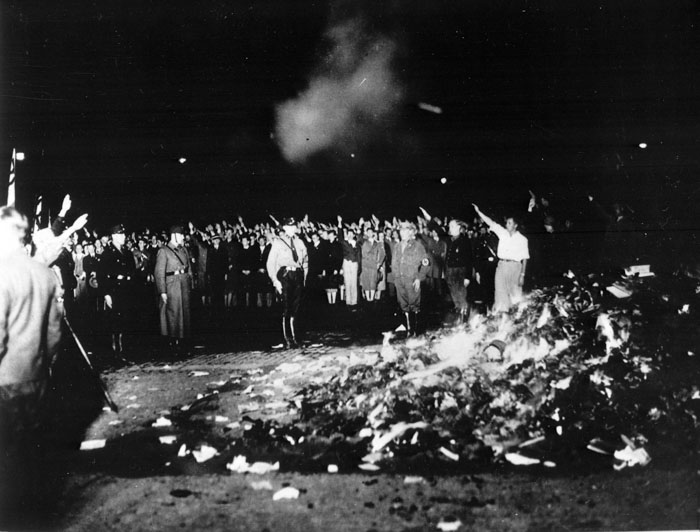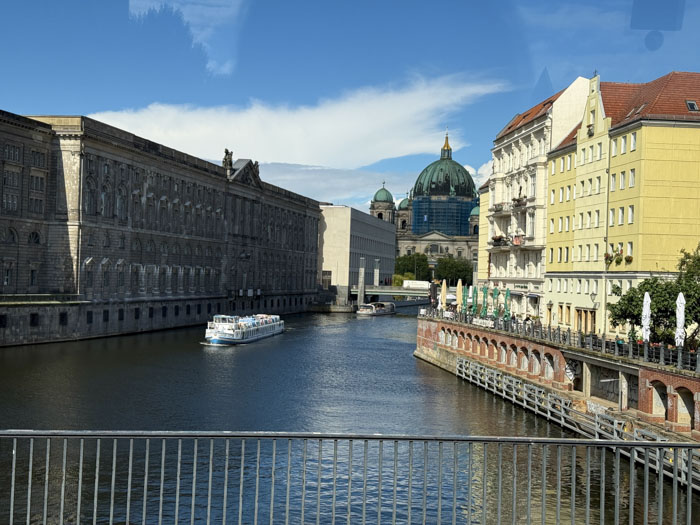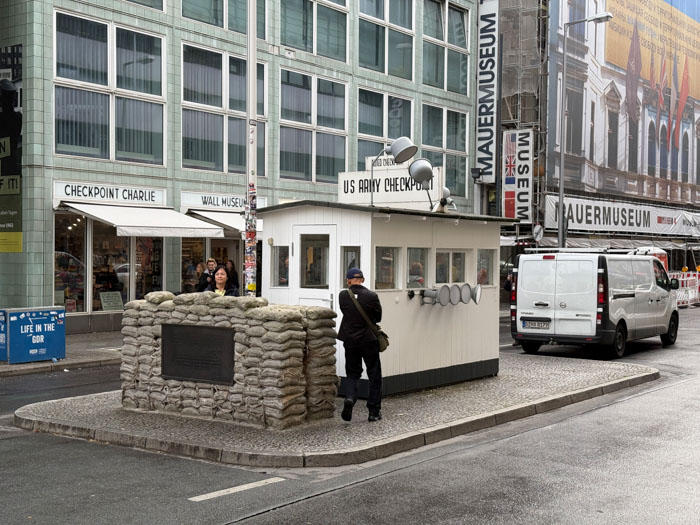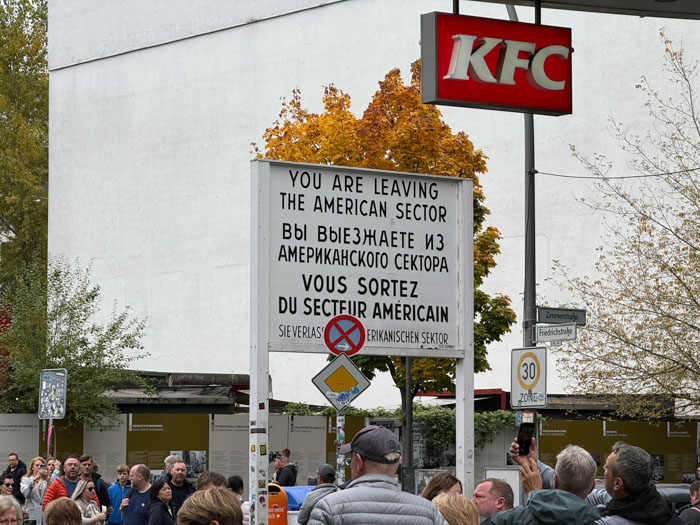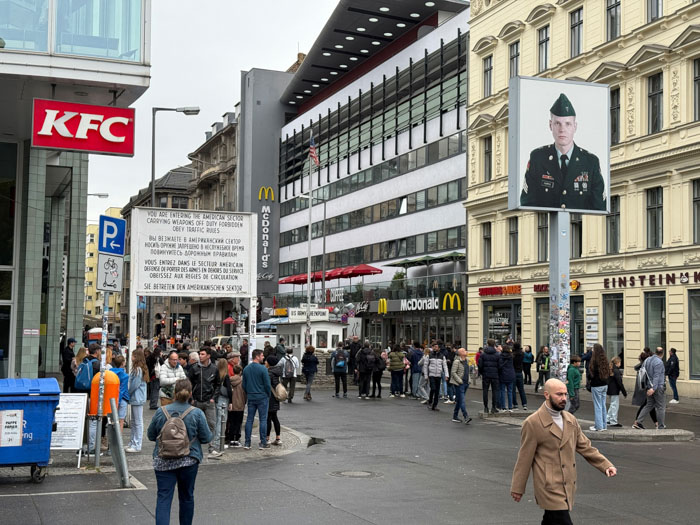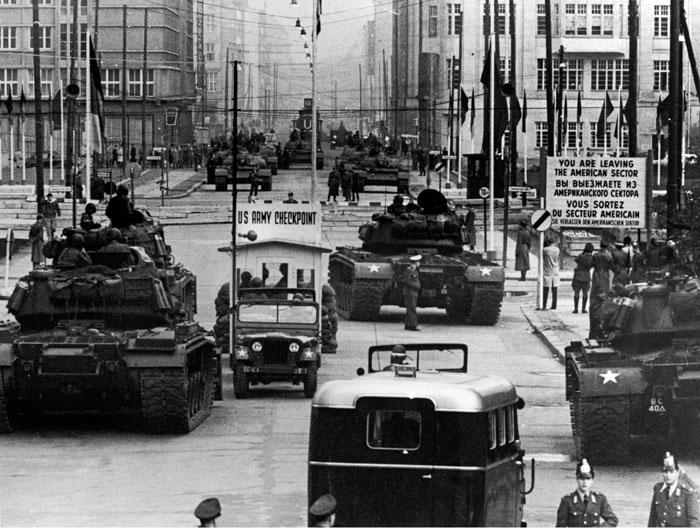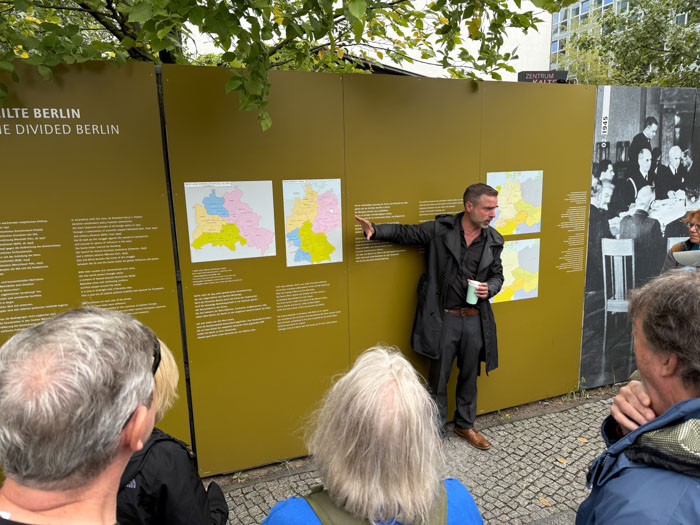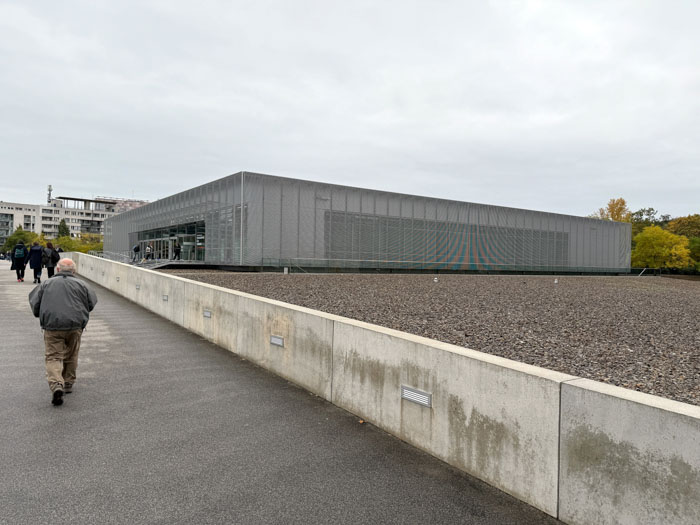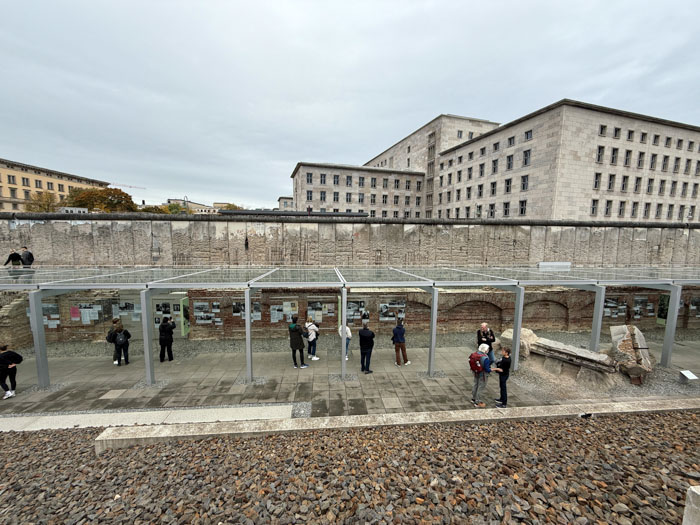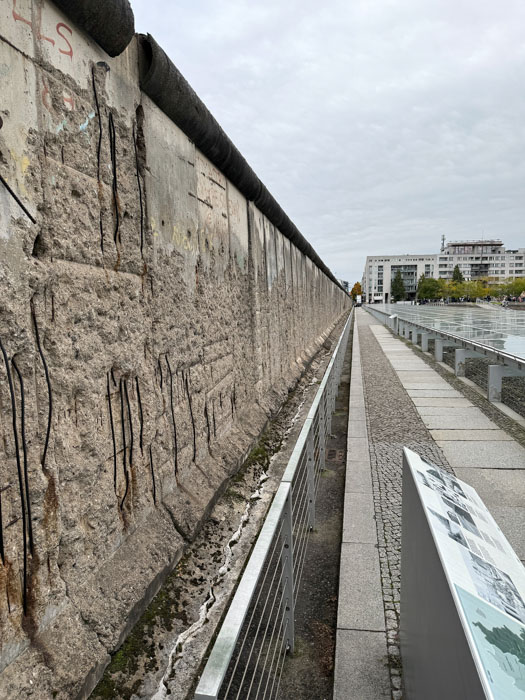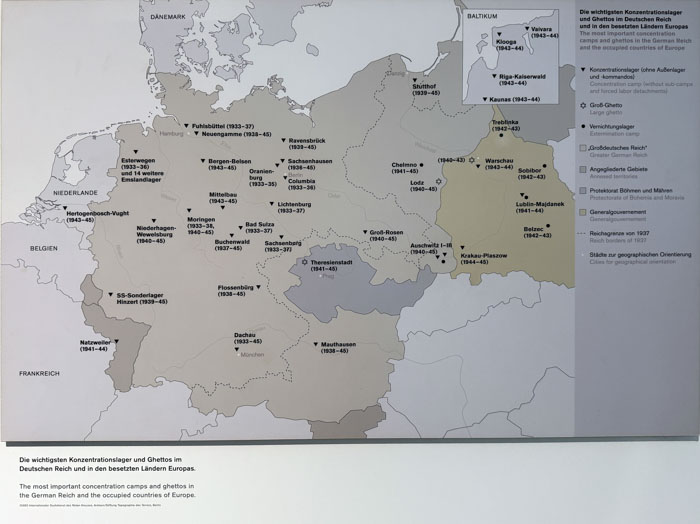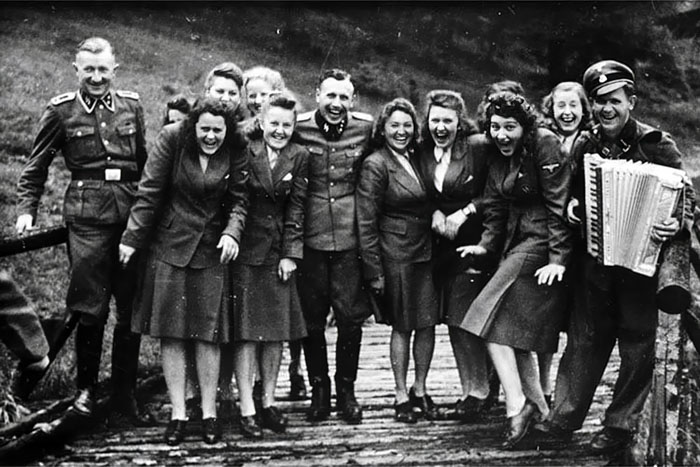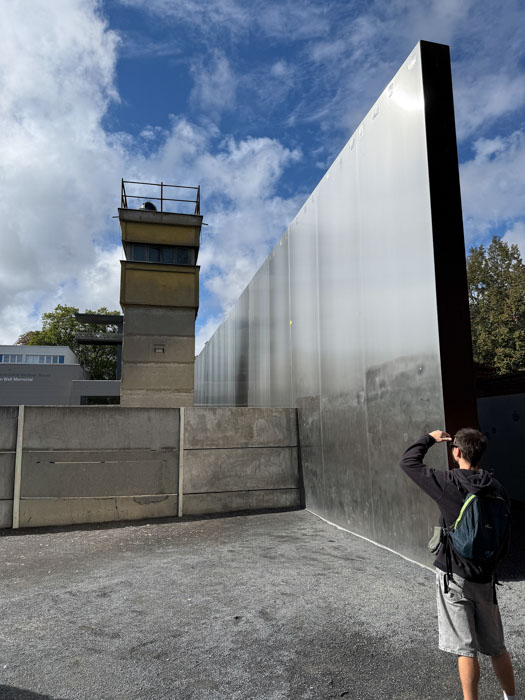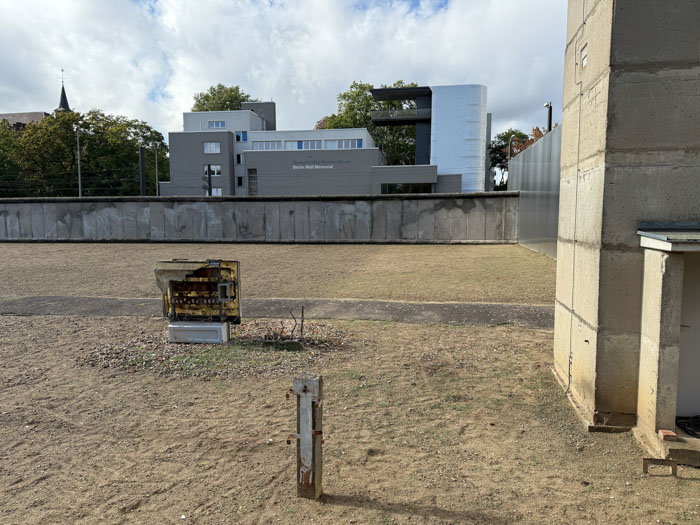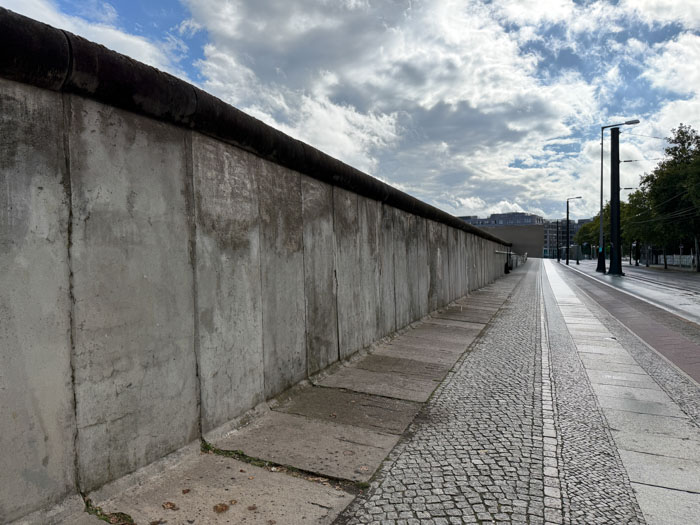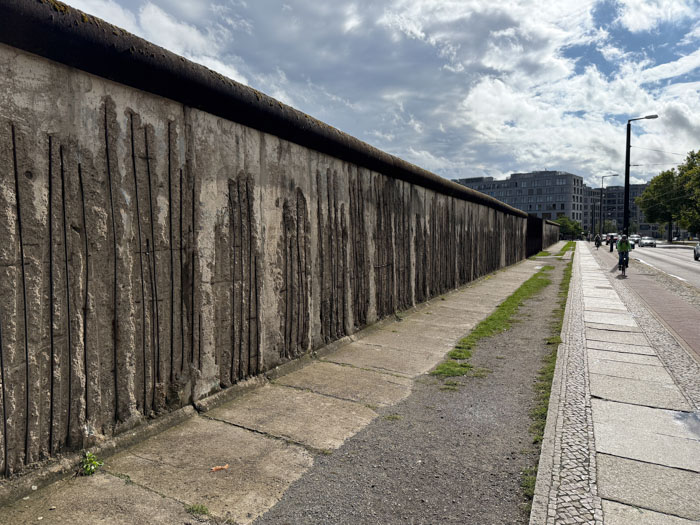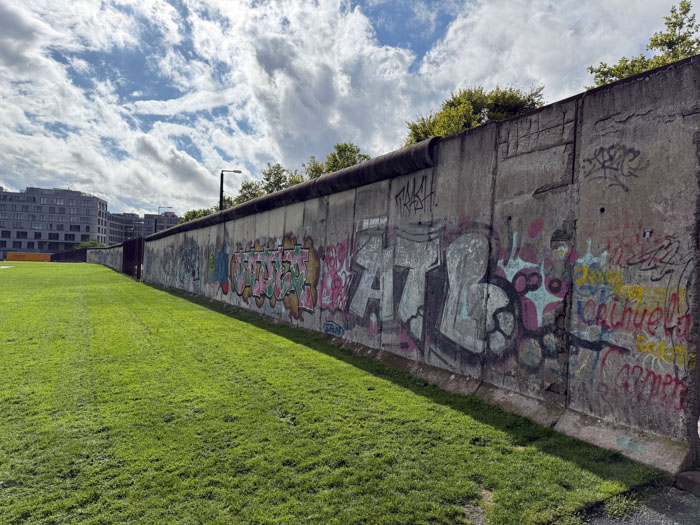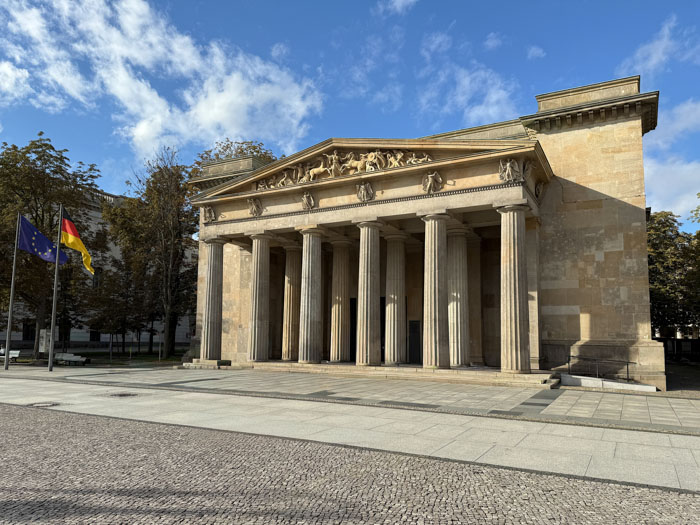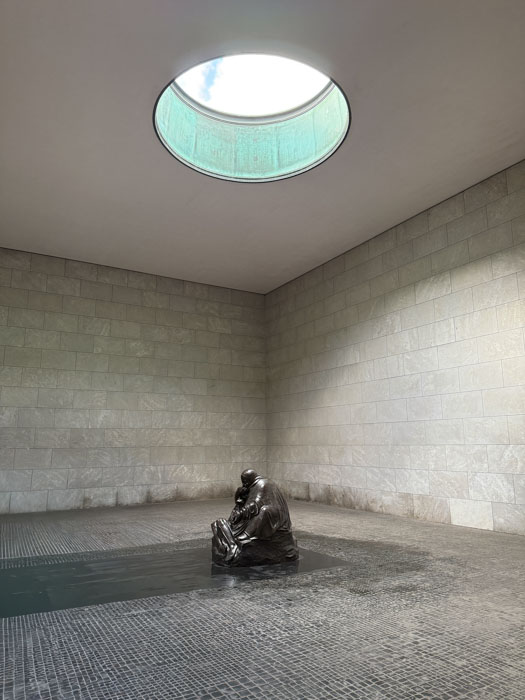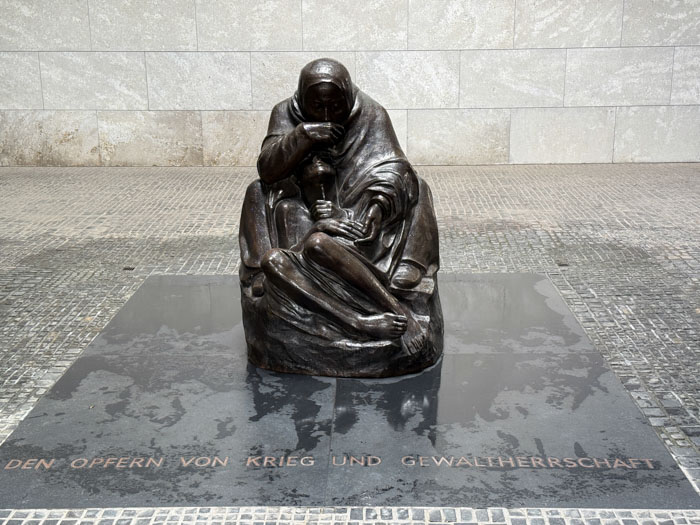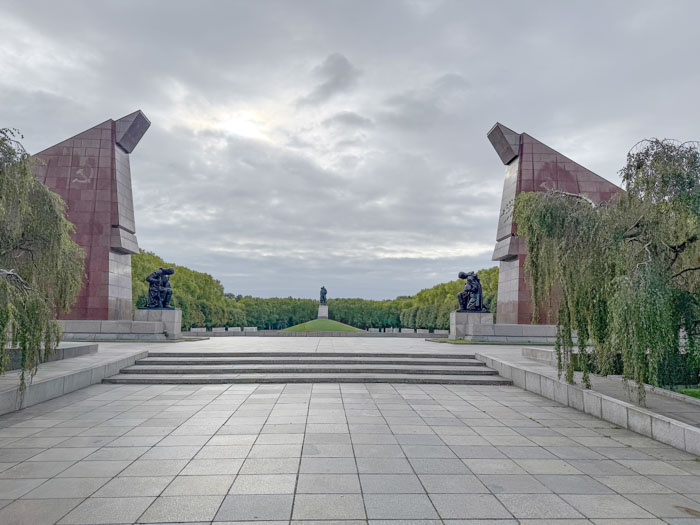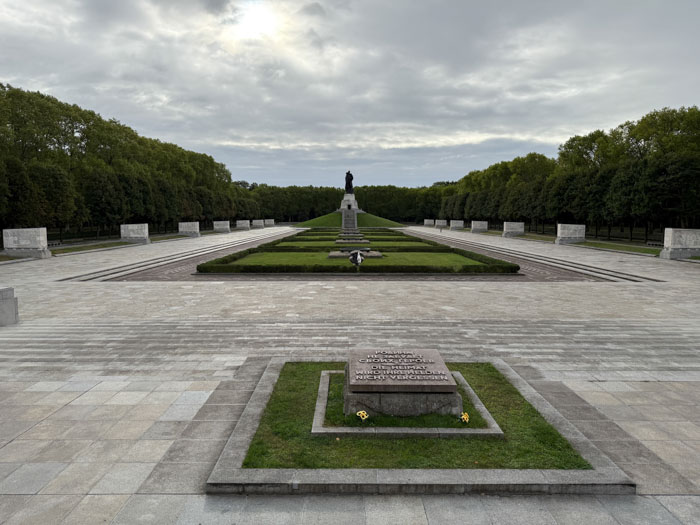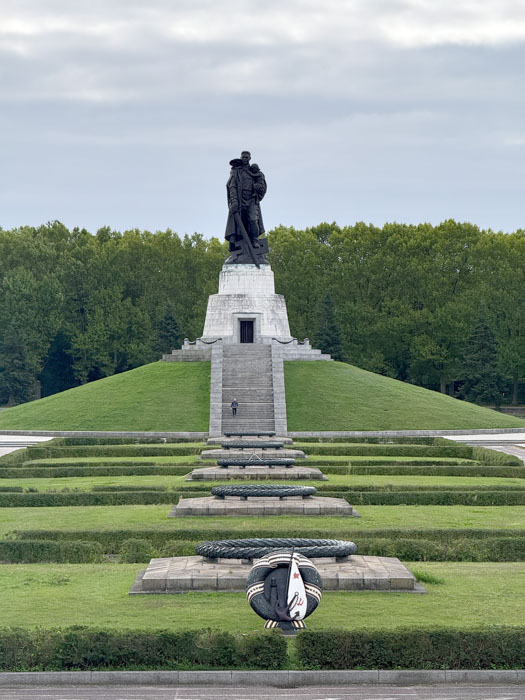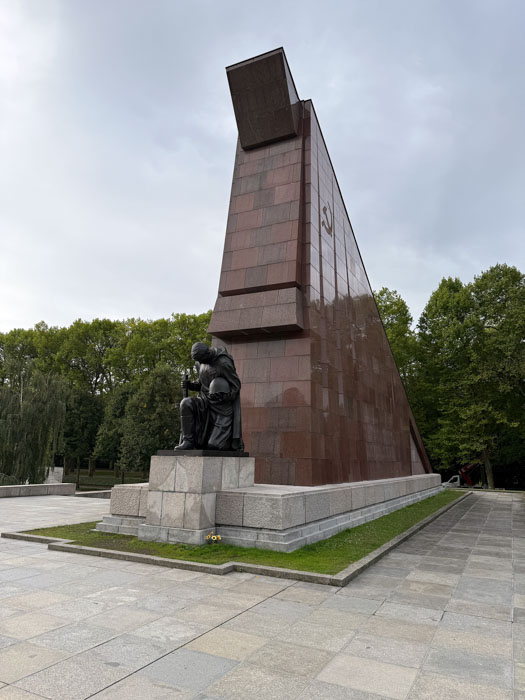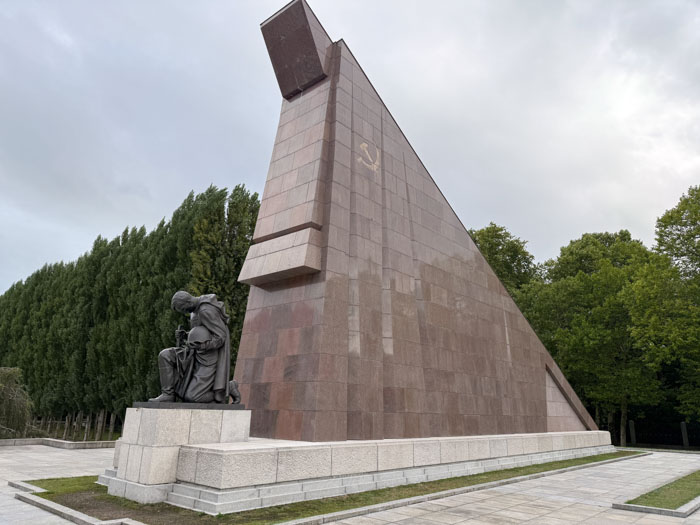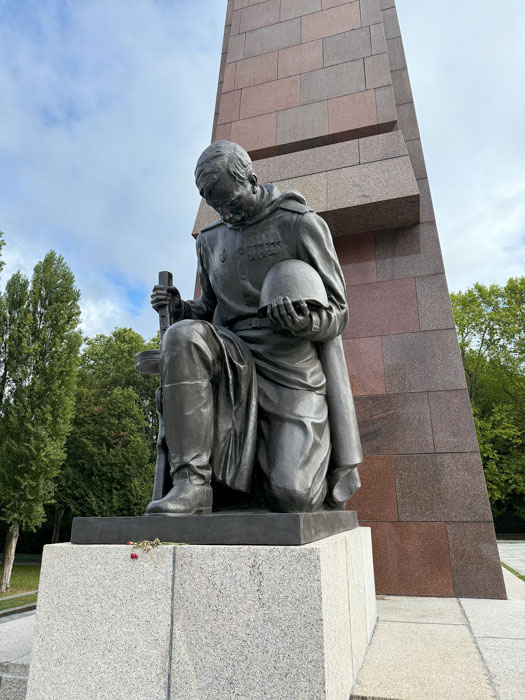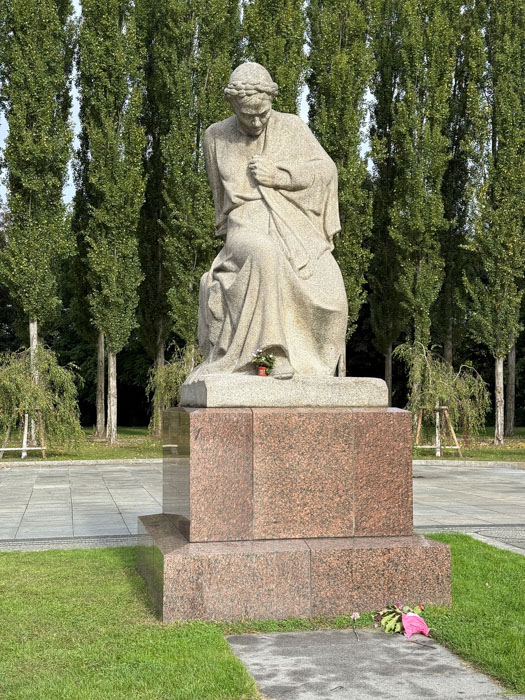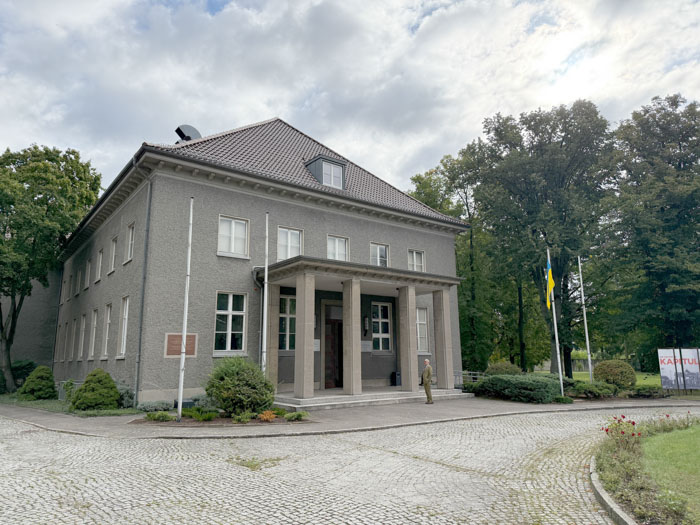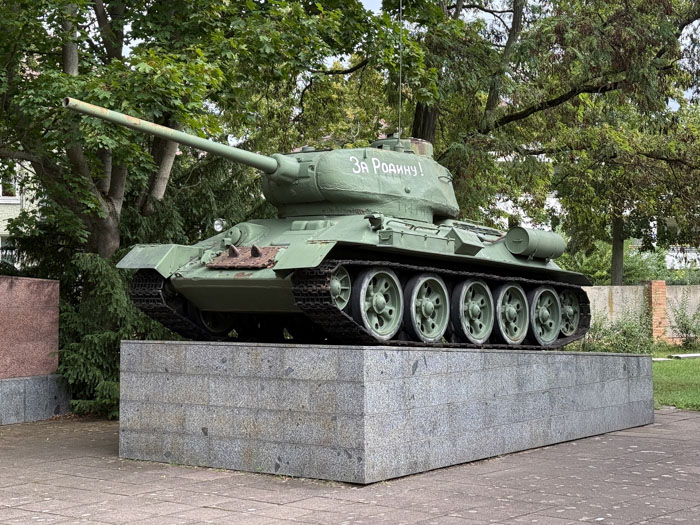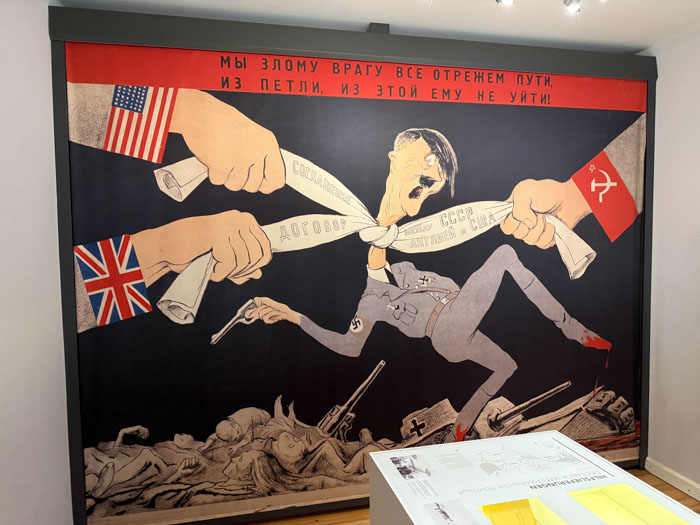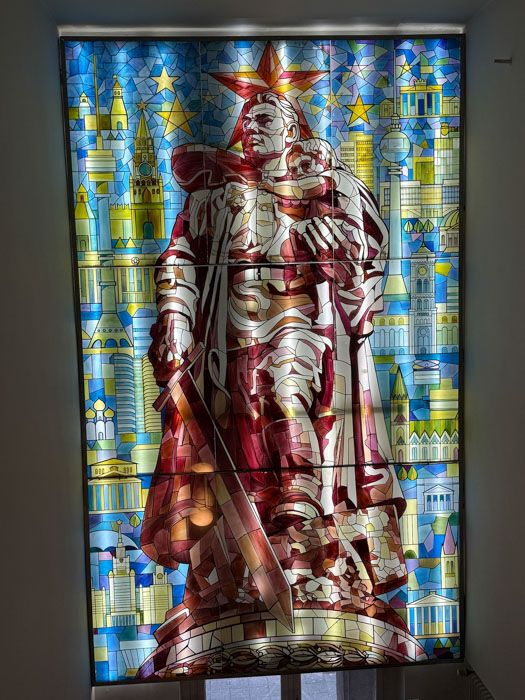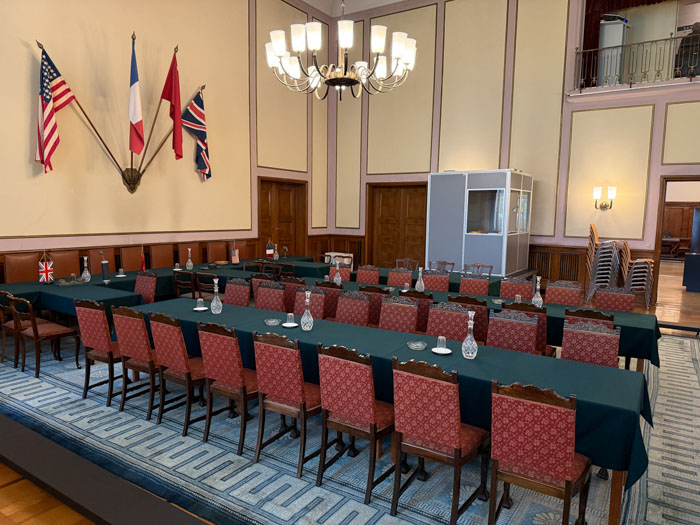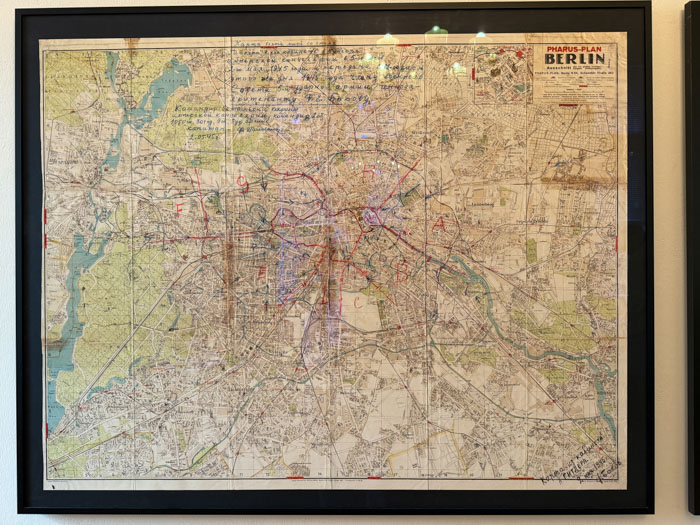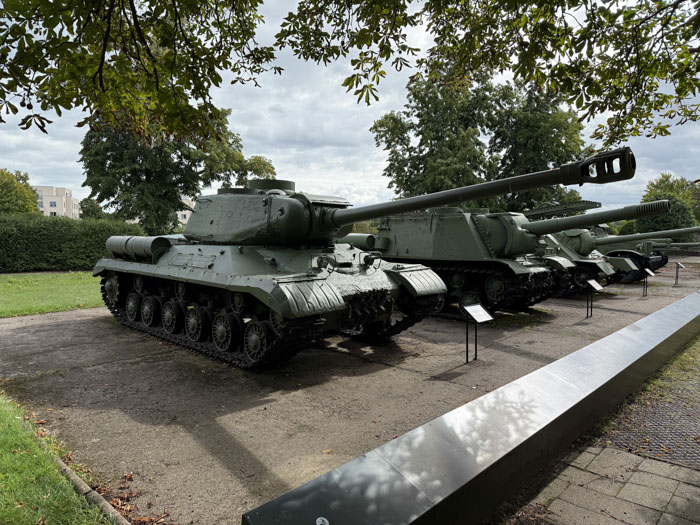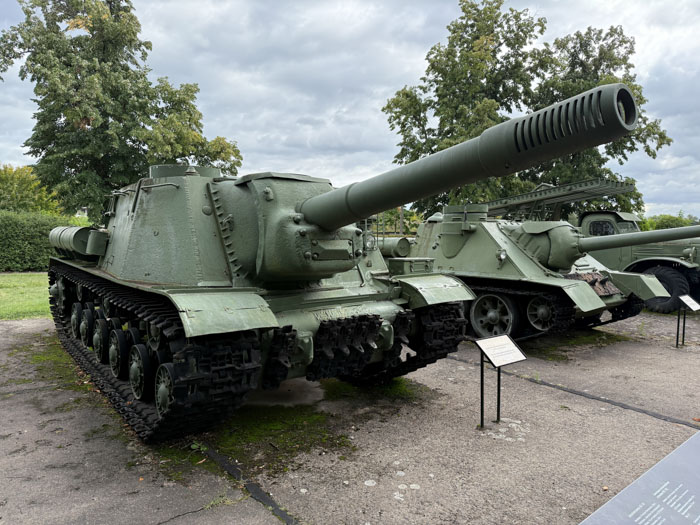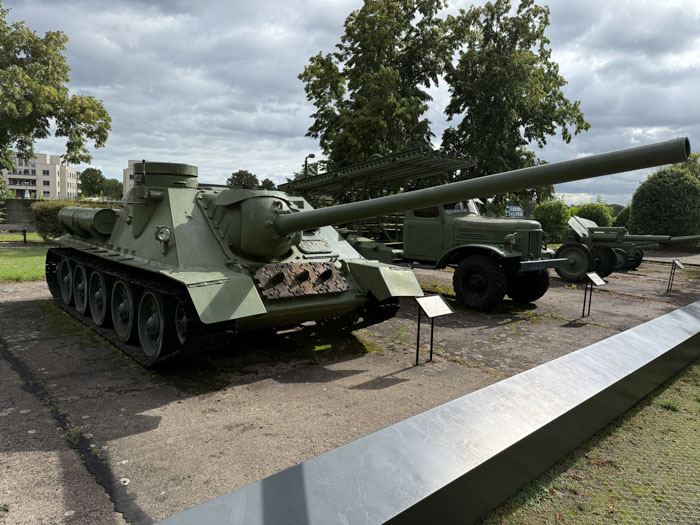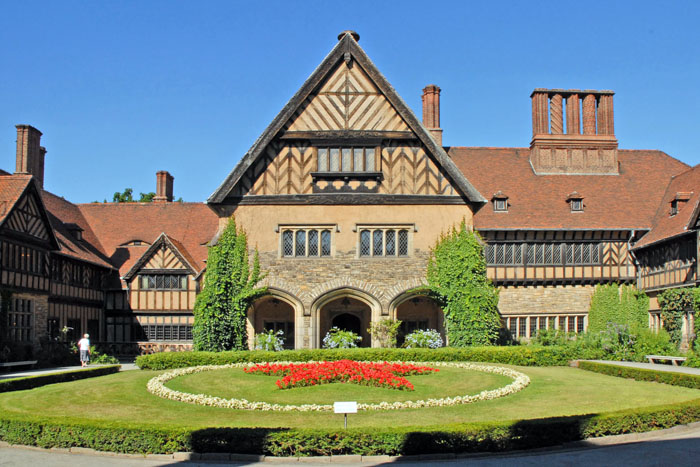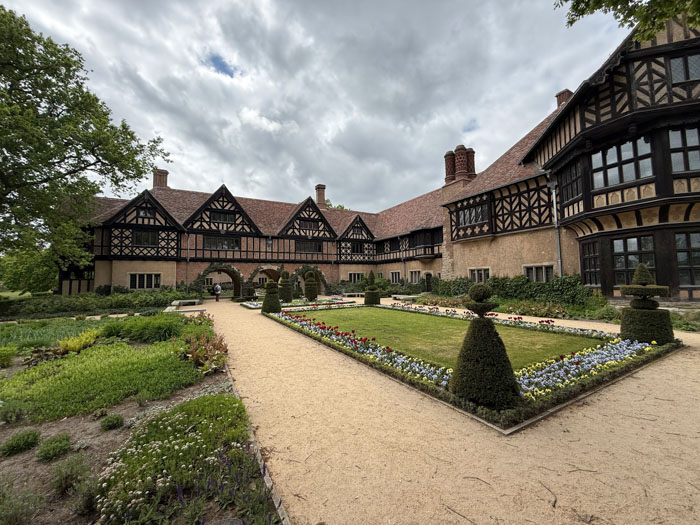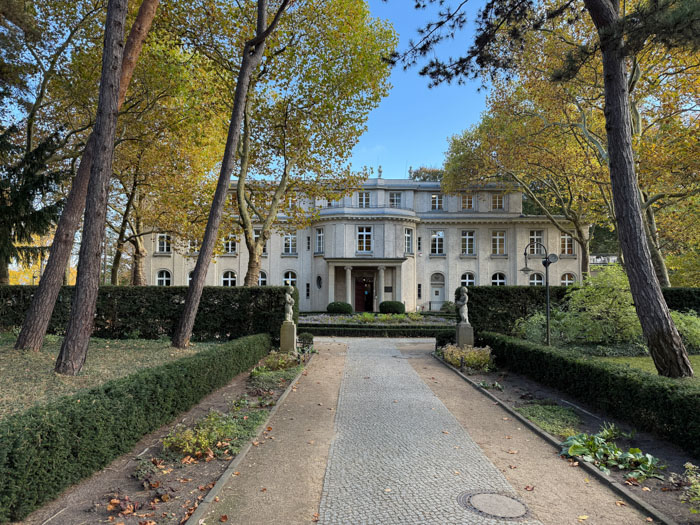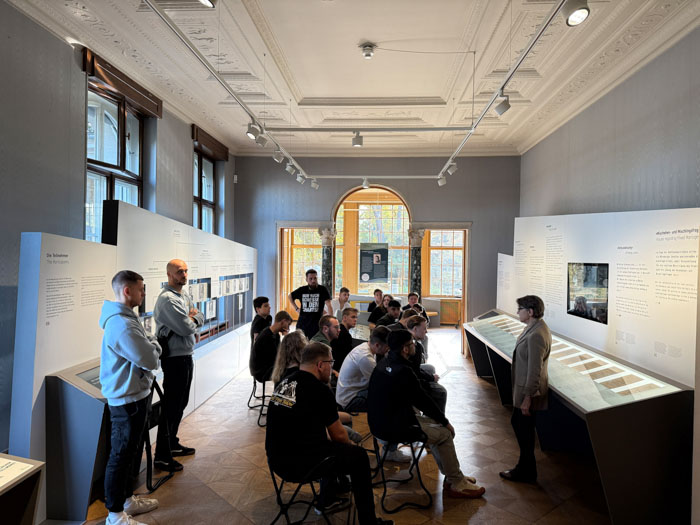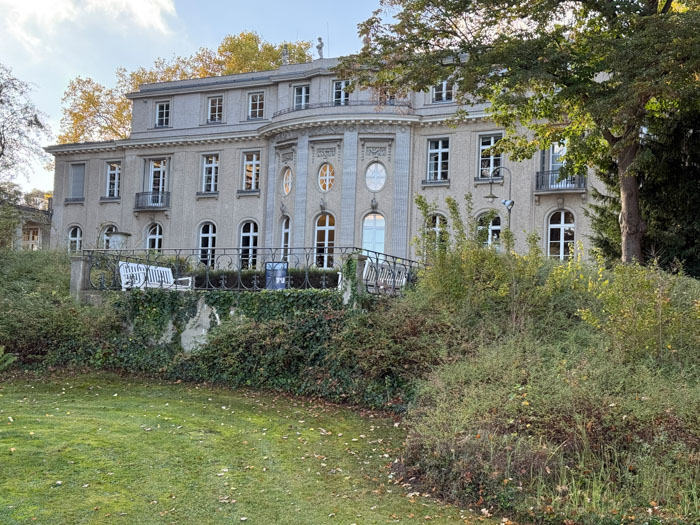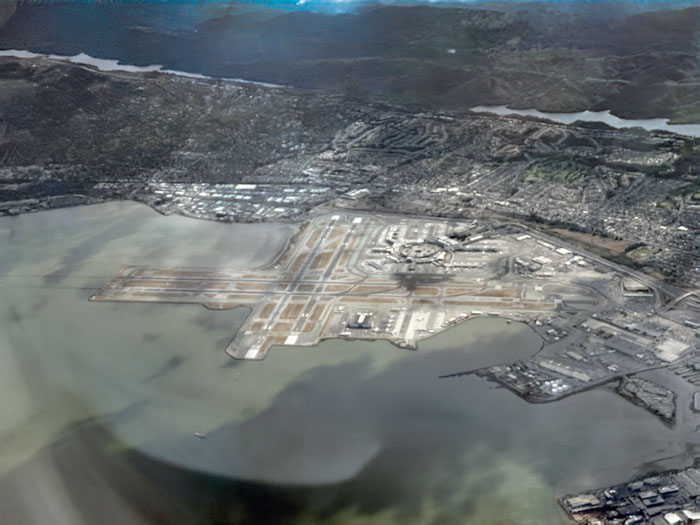Hal Jespersen’s World War II Tour of Poland and Berlin, September 2025 (Part 3)
This is my (Hal's) report of my trip to discover World War II Poland (and Berlin) with Stephen Ambrose Historical Tours. It is my sixth outing with this group and the fourth with Chris Anderson, lead historian.
Since this is a long report with 350+ iPhone 16 Pro photos, I have broken it into three parts:
- Gdańsk, Wolf’s Lair, Warsaw
- Kraków, Auschwitz, Wrocław, Stalag Luft III
- Kostrzyn, Seelow, Berlin, Potsdam (this page)
Sunday, September 14 — Kostrzyn/Küstrin, Seelow, Berlin
Today is our first day of inclement weather, but it also is a day of repetition for me. In May of this year, I was on Chris’s tour for the 80th anniversary of V-E Day, and we visited a superset of the places we’ll see today. On the bus we watched the outstanding film, Downfall. We drove about two hours north on country roads along the Polish border and crossed a bridge on foot to enter the town of Kostrzyn nad Odrą (German: Küstrin an der Oder). The Route 1 bridge over the Oder is under reconstruction and isn’t capable of handling our bus, so Sylvester stayed in Germany. (Back in May, we crossed at Frankfurt an der Oder, but that required a significant detour and delay.) We had a view from the bridge of the König (King) Bastion of the Altstadt fortress. Our visit to Küstrin, which was part of Germany in 1945, was to examine the Battle of the Oder–Neisse, April 16–19, 1945. This is usually conflated with the Russian attack on the Seelow Heights, starting the Battle for Berlin.
We were met by our local guide, Rafo—the same one I had in May. For my convenience, I have included some of the photographs I took in May. The way to tell the difference is that today's photographs are in cloudy or rainy weather, and Rafo is wearing a US 5th Armored Division patch on his jacket. (He's a World War II reenactor.)
Rafo described how the old fortress here, "Festung Küstrin,” was half demolished in the 20s, but it was originally the border of the Altstadt. It was a difficult place to attack through because it spanned an area between the Oder and Warthe Rivers, and there were only a few bridges. As we walked into the old city, which dates from the 16th century and had 20,000 people, we saw that it was essentially obliterated. The war ruins of the old city had been bulldozed over, and only woods remain. Chris called it Pompeii on the Oder. Rafo used large pre-war photos to orient us so that we could imagine where city hall once was, the Frederick the Great monument was, streets (still identified by signs) were, etc. Many of the bricks were transported away to rebuild Warsaw. He showed us where Admiral Tirpitz lived.
Rafo described how Hans Reinefarth, who had commanded during the Warsaw Uprising, attempted to defend Küstrin. We saw the bunker named after him. Rafo criticized the Soviet tactics, describing how a column of Sherman and Valentine tanks, advancing without infantry cover, was decimated by German Panzerfausts. And how Panther tank turrets were in fixed defensive positions on the riverbank. Inside Bastion Filip (Philippe), we visited Muzeum Twierdzy Kostrzyn, which is a nice, modern museum, but not a word of English was employed in the displays. They have a good collection of weapons on display.
We had lunch at a nearby McDonald's, believe it or not. It was that or a gas station. A Polish Big Mac tastes just the same as one in the U.S. After walking back to the bus in Germany, we drove 20 minutes to Seelower Höhen (Seelow Heights), site of the critical initial assaults in the Battle of Berlin, beginning on April 16. In my May trip, we had two significant stops before Seelow. I invite you to look at the description here. This is actually my third trip to this museum within the last year and I have taken advantage of previous photos to adjust for the inclement weather today.
There is a museum and memorial. We started with an excellent 30-minute movie about the battle, which focused on eyewitness testimony from German civilians and soldiers. And they had a cool 3-D terrain map in the theater. In May, I wrote, “The museum itself is quite basic with more information about creating the memorial than about the battle and a few artifacts.” However, sometime in the preceding four months they made dramatic improvements to the displays, which now include background information about the preparation for the battle as well as a few details of the battle itself, getting you ready for the movie.
Outside in front are a T34-85, a rocket launcher truck, and a couple of artillery pieces. Climbing a hill, we visited a Soviet victory monument, a Soviet cemetery that consisted entirely of Heroes of the Soviet Union graves, and got a panoramic view of the battlefield terrain, the Oderbruch, below. Chris gave us a good overview of the conduct of the battle and explained the importance of the Hauptgraben canal/tank barrier, which we crossed over in the bus, as well as other important terrain features.
Our drive to Berlin was about 90 minutes. The weather has turned beautiful, at least temporarily. We checked into the Westin Grand Berlin Hotel, the same one we stayed in in May—a comfortable, classy hotel. It is located in the Mitte section of formerly East Berlin, quite convenient to the major tourist areas. Dinner was yet another buffet in the hotel restaurant, but it was more tolerable tonight because the quality of the food was noticeably better than previous attempts at lesser hotels.
Monday, September 15 — Berlin
We have a new bus driver for the remainder of the tour, Wojtek, which I believe translates as "happy warrior." Sylvester's time on the bus expired in obeisance to European regulations. Andreas is our local guide for the morning’s generic Berlin tour. He was excellent, although not entirely focused on WWII. As with yesterday, there is some repetition from previous trips, and I have reused some of my photos. Today shifted quickly between bright sunshine and downpours.
We started at the former Führerbunker but didn't get out of the bus because it is only a parking lot now, and you can't see any trace of the actual bunker. Then we went to the 2005 Holocaust memorial (Memorial to the Murdered Jews of Europe). The very unusual above-ground collection of large concrete blocks is supposedly inspired by a road in the Kidron Valley of Israel. Many of the blocks are cracked down the middle, which Andreas blames on the waning quality of German engineering. There is a small museum underneath that we did not visit. The U.S. Embassy is right next door.
Andreas discussed the genocide of non-Jewish populations, such as Roma/Sinti (gypsies), the disabled, and homosexuals, but even more significantly, 12 million Soviet civilians. At the Reichstag building, we heard about the legislative history since the formation of the German nation, and how multiple parties caused a good deal of trouble. Andreas also talked about the rise of Hitler to the chancellorship. He did not describe the Soviet assault on the Reichstag in any detail, but mentioned that 4,500 Soviet soldiers were killed before it was captured on May 2nd. Then we strolled by the Sinti and Roma victims of the Holocaust.
We walked to the iconic Brandenburg Gate. The statues on top have changed over time. Its original version, erected by Frederick the Great, shows Eirene, the Greek goddess of peace, on her horses entering the city, showing the beginning of a peaceful time. But after the defeat of Napoleon, it was turned into a victory monument by adding an iron cross and the Imperial Eagle above the goddess and changing her to the Roman goddess of victory. The Berlin Wall and a secondary interior wall isolated the Brandenburg Gate and turned its area into a Zone of Death.
Bebelplatz (formerly Opernplatz), formerly home to the imperial library and now Humboldt University, was the site of a famous book burning on May 10, 1933. The large square has a plaque in the pavement and a window showing empty bookshelves beneath the street. Nearby is an impressive monument to Frederick the Great on horseback; he was responsible for increasing the influence of the once tiny city of Berlin.
We passed over Museum Island on the Spree River but did not visit any of the museums. Andreas pointed out Stumbling Stones, which he said originated in Berlin. We stopped at Checkpoint Charlie on Friedrichstraße. Lots of tourists, snacks, and souvenirs here, as well as some minor museums we didn’t visit. I had a delicious wurst for lunch at a tiny shop. For some reason, a photo of U.S. Army Sergeant Jeffrey Harper is hanging over the street at the checkpoint. He was an army band tuba player who was not stationed at the checkpoint.
The “Topographie des Terrors,” which is a modern museum building on the site of the various security services—Gestapo, SS, SD, and the Reichssicherheitshauptamt (RSHA). Inside is a very comprehensive history of these services and their crimes during the war. One of the new things I learned was that the term "protective custody" was used in the Reich differently from the way we use it today. Instead of protecting an individual from harm, it protected the state from harm by individuals. Outdoors there is a very long series of displays about Berlin 1933–45, just in front of 200 meters of the old Berlin Wall on Niederkirchnerstraße separating the districts of Mitte (East) and Kreuzberg (West). The museum is right next door to a large, impressive building that was the former Luftwaffe headquarters, which ironically survived the war undamaged.
Something new for me was a visit to the Wall Memorial (Gedenkstätte Berliner Mauer) on Bernauer Straße and Ackerstraße, where one of the first segments of the wall was constructed in 1961. There is a small demonstration of different wall construction methods, a replica guard tower, and how the space between two walls was a death zone. There is also a very nice park on either side of the wall segments. Chris described the evolution of the wall.
Neue Wache (New Guardhouse) was originally a royal guard house and then was intended to be a tomb of the unknown soldier, but Hitler claimed that he was the unknown soldier because of his World War I service, so that put the kibosh on that. During the Third Reich, it was an active Nazi shrine. It is currently the Central Memorial of the Federal Republic of Germany to the Victims of War and Tyranny. It features a moving statue by Käthe Kollwitz entitled "Mother with her dead son," which is all the more impactful because it is a relatively small statue in a huge empty room, and a circular window in the ceiling is its sole illumination.
Dinner was with some friends at Lutter & Wegner, an Austrian-German restaurant whose branch I had visited in Leipzig in May. Super Wienerschnitzel.
Tuesday, September 16 — Berlin and Potsdam
We started at the Soviet War memorial and military cemetery in Treptower Park, a new experience for me. It was designed by Soviet architect Yakov Belopolsky to commemorate 7,000 of the 80,000 Red Army soldiers who were killed in the Battle of Berlin in April–May 1945. It opened four years after the surrender, on May 8, 1949, and is simply spectacular.
The focus of the memorial is a monument by Soviet sculptor Yevgeny Vuchetich: a 12-m tall bronze statue of a Soviet soldier with a sword holding a German child, standing over a broken swastika. The statue commemorates the deeds of Sergeant of Guards Nikolai Masalov, who during the final storming of Berlin risked his life under heavy German machine-gun fire to rescue a three-year-old German girl whose mother had apparently disappeared. Germany is responsible for maintenance and repair of all war memorials in the country, including this Soviet memorial in Treptower Park.
Next, another new-to-me: the Museum Berlin-Karlshorst, formerly called the Capitulation Museum, and later the Deutsch-Russisches Museum. The museum is located at the venue of the unconditional surrender of the Wehrmacht on May 8, 1945. The building was the officers' mess of the Wehrmacht engineering school, then Zhukov’s headquarters, and then the headquarters of the Soviet Military Administration in Germany. Here, in 1949, the Soviets handed over administrative authority to the first East German government. We had a one-hour tour with Benjamin, which was fortunate because the exhibits were in dark rooms with abbreviated English translations, so self-guidance would have been difficult.
Benjamin led us through a rather high-level summary of the war in the East, although there were no battle or campaign descriptions. He covered the start of the war, the brutal treatment and deaths of Soviet POWs (60%), including Zyklon B testing and dark medical experiments. Then a description of the occupation of the western part of the USSR, which included a lot of photos taken by regular German soldiers; cooperation with US and British allies for supplies; the effects on the German economy, including the importation of ostarbeiters; the Battle of Berlin; and the pivot of Soviet propaganda from Nazis to the Germans they would have to work with after victory.
We finished in the Surrender Room. Although Gen. Jodl surrendered to Eisenhower in Reims, France, on May 7th, Stalin insisted that the procedure be repeated in Berlin on the 8th. Because of delays translating the surrender into Russian and trying to manufacture a French flag, the ceremony actually stretched into the early hours of May 9th. All the principals were high-level military (Zhukov, Tedder, Keitel) to ensure that no one could say that the German military was stabbed in the back, as happened after WWI. Then out back were more armored vehicles on display.
We drove about an hour southwest to Potsdam while Chris gave us a brief overview of the city, which had a long military history. On the way, we watched the excellent 2001 Wannsee conference movie, Conspiracy. We had an hour for lunch, and I ate in a super casual place I enjoyed last May—PiPaSa (Pizza, Pasta, Salad).
We visited Schloss Cecilienhof, built 1913–17 for Crown Prince Willie, but famous as the site of the July 1945 Potsdam conference between Truman, Churchill/Attlee, and Stalin to map out the occupation of Germany and get Stalin’s commitment to join the war against Japan. The large complex was closed, so we stood outside a chain-link fence and talked about this and the other two Big Three conferences. I have included a couple of photos from my May trip when the construction was less intrusive.
Next was a repeat visit to the Wannsee Conference House in the swanky suburb fronting on Wannsee Lake. This hosted the January 20, 1942, conference called by Reinhard Heydrich to determine the “final solution“ to the Jewish problem. Although as many as 900,000 had already been killed by this time, and the decision to kill all the rest of the Jews had already been made at the highest level, the 90-minute conference worked out some of the logistical details of how the various state ministries and the SS could deport millions more to occupied Poland and murder them.
The exhibits in the mansion cover the general situation in early 1942, the conference attendees and agenda, what happened to the participants, the Protocol (essentially meeting minutes) they agreed on, the killing before the conference, the Holocaust itself in general, and the history of how this site has been handled since. Reproductions of many of the Protocol document pages are available, and good English translations are included. Although thirty copies of the Protocol were produced, only one copy survived, discovered by US attorneys in 1947 after it had been stored away in Martin Luther’s Foreign Service files in Thüringen, seized by the US Army in 1945.
We returned to the hotel after about an hour of busing. Tonight was our farewell dinner. It was the first hosted dinner we had for the entire trip that was actually decent and up to the standards of my five previous Ambrose tours.
Wednesday, September 17 — Flying Home
I flew SAS home via Copenhagen again, about 18 hours door-to-door. Berlin Brandenburg (BER) has some intrusive security pat-downs, but a very nice lounge (“Tempelhof”). The layover at CPH was three hours, where the SAS lounge was nice but crowded.
I had an excellent time on my sixth Ambrose tour and look forward to doing another one again someday. I had never been to Poland before, and I enjoyed it—very friendly people, interesting cities, some beautiful sights, but a very sad history. Chris Anderson was excellent as usual, and Marta Skirlo was a super tour coordinator. All the tour guests were friendly and engaged in the itinerary. And Berlin—in the first 75 years of my life, I never got to experience it, despite dozens of trips to Europe and Germany (where I lived for 3.5 years in the Cold War), and now I have visited it a third time in less than a year. A very special trip for me.
